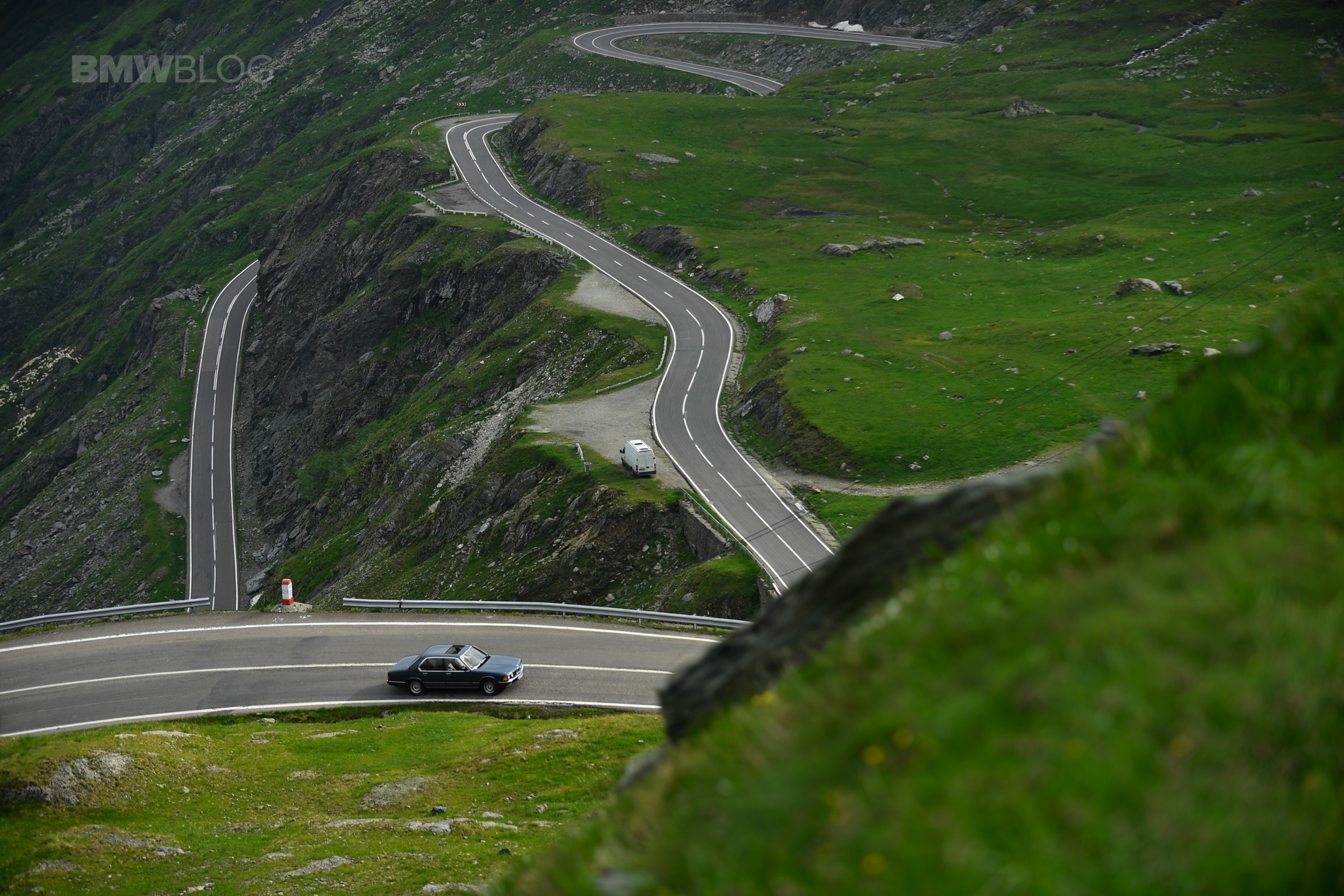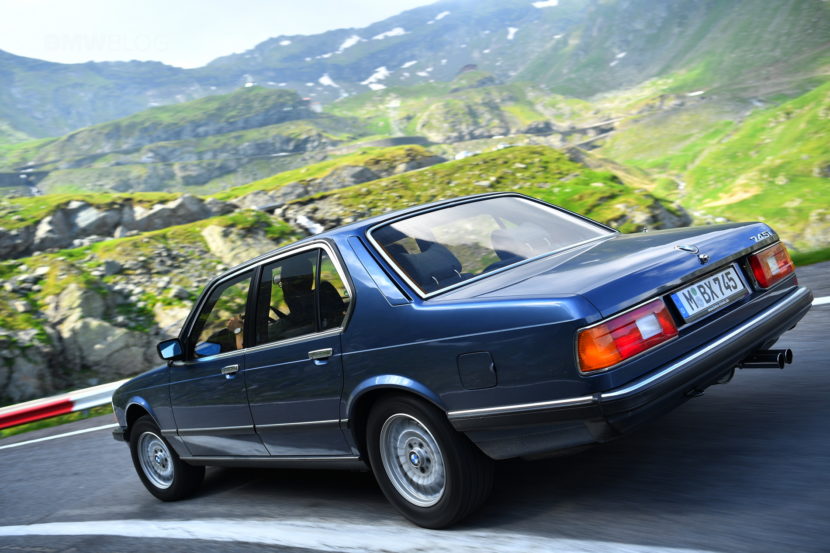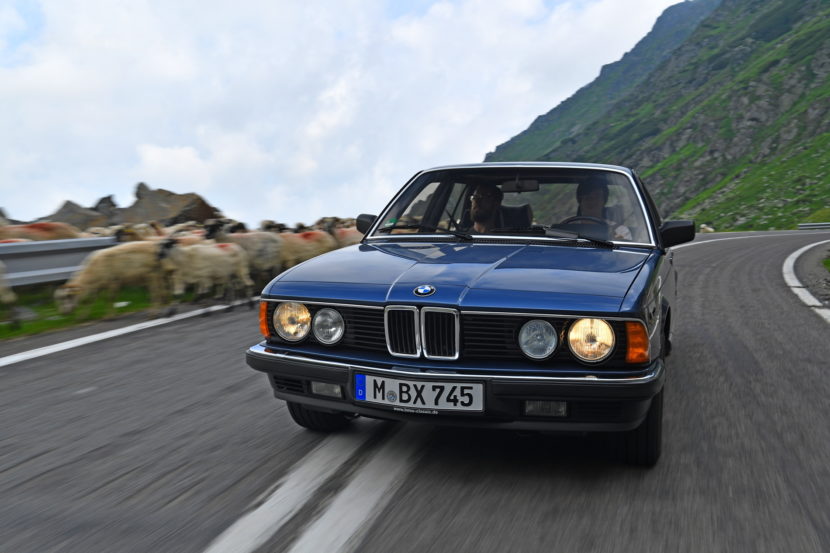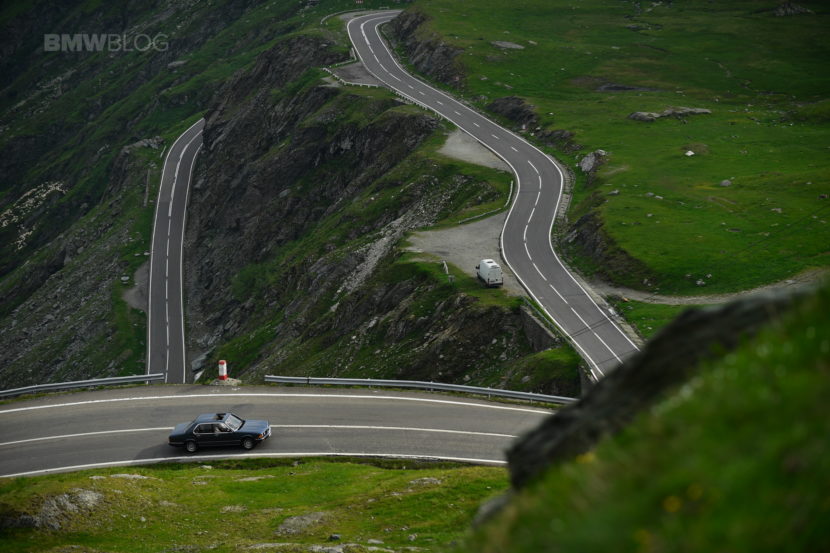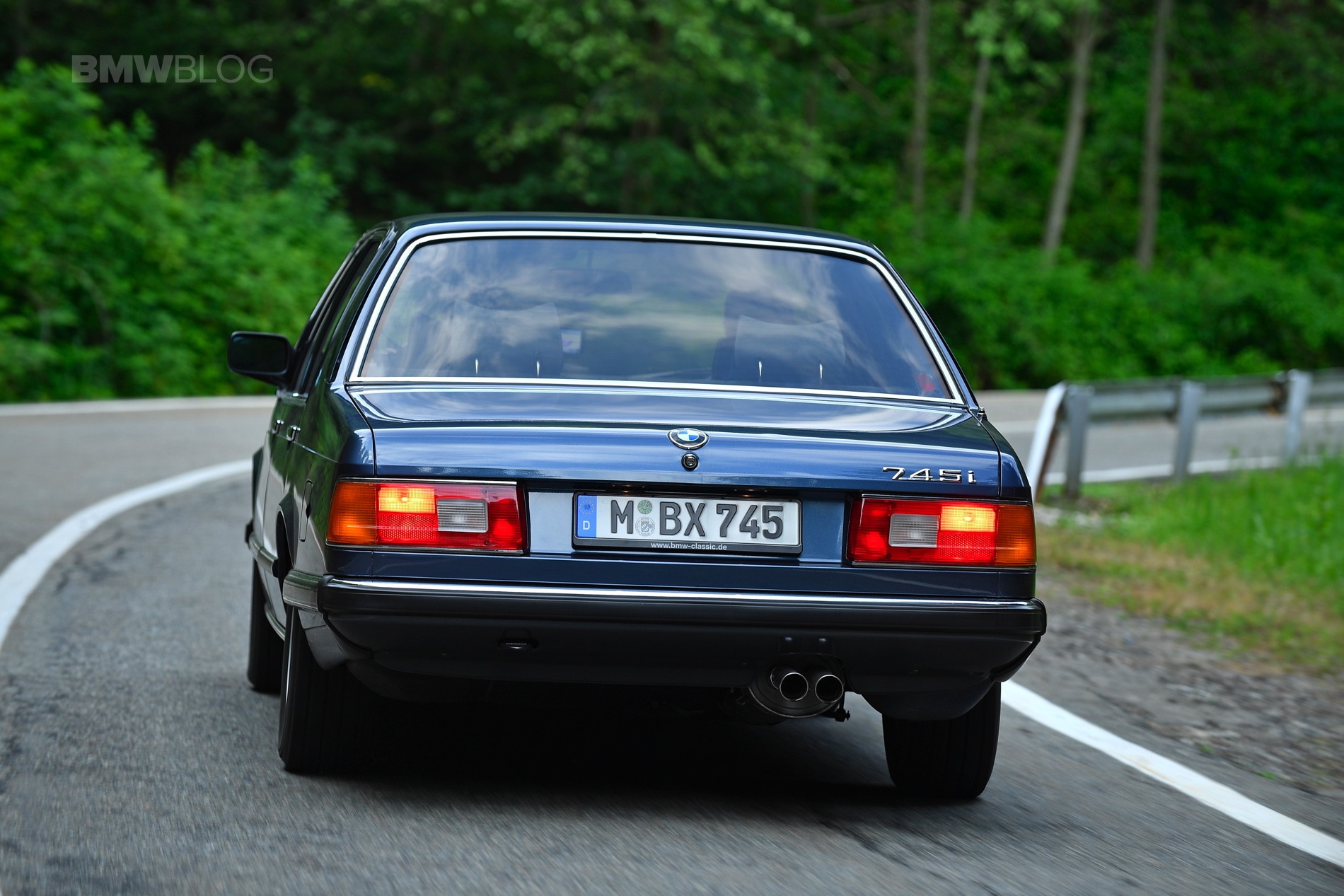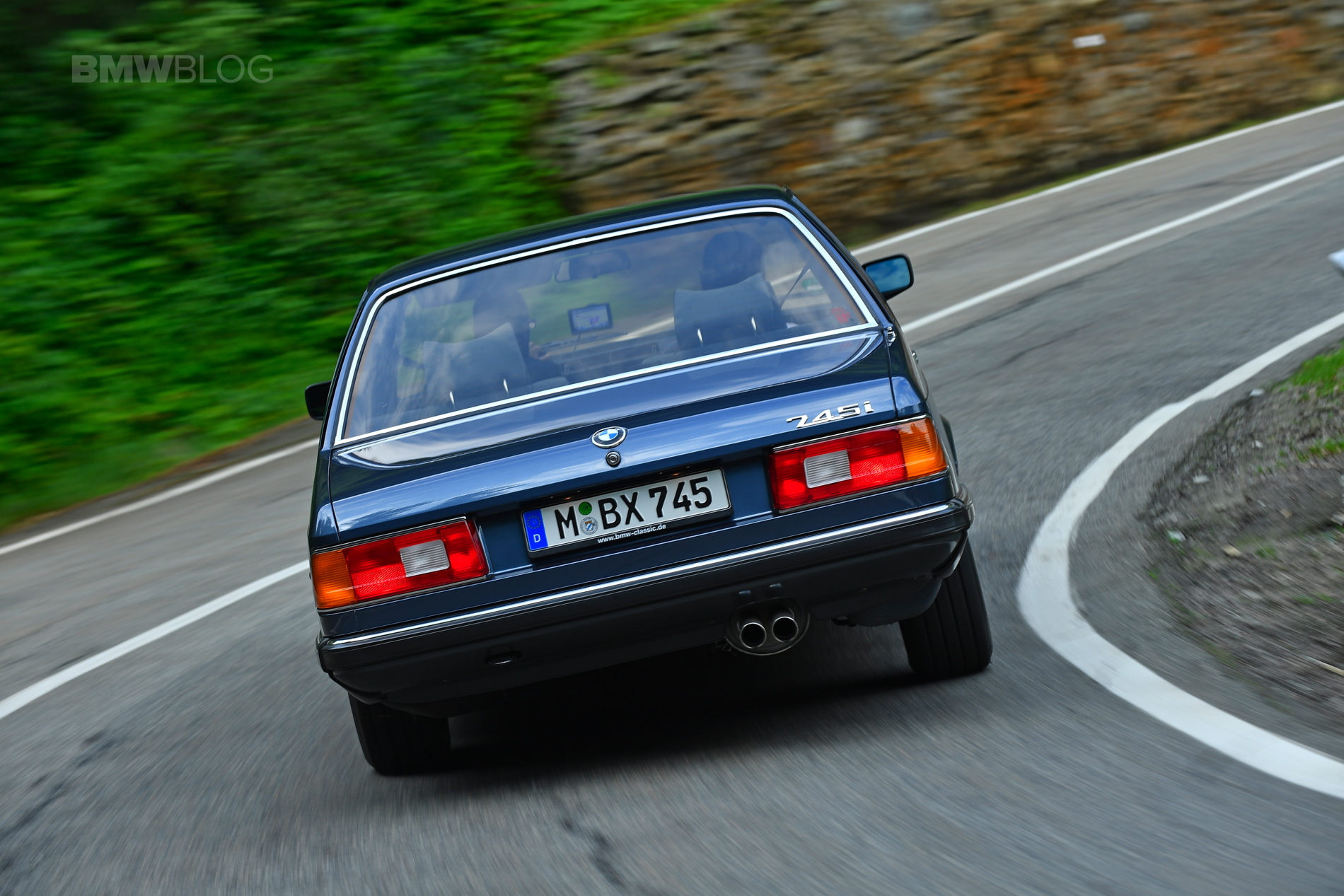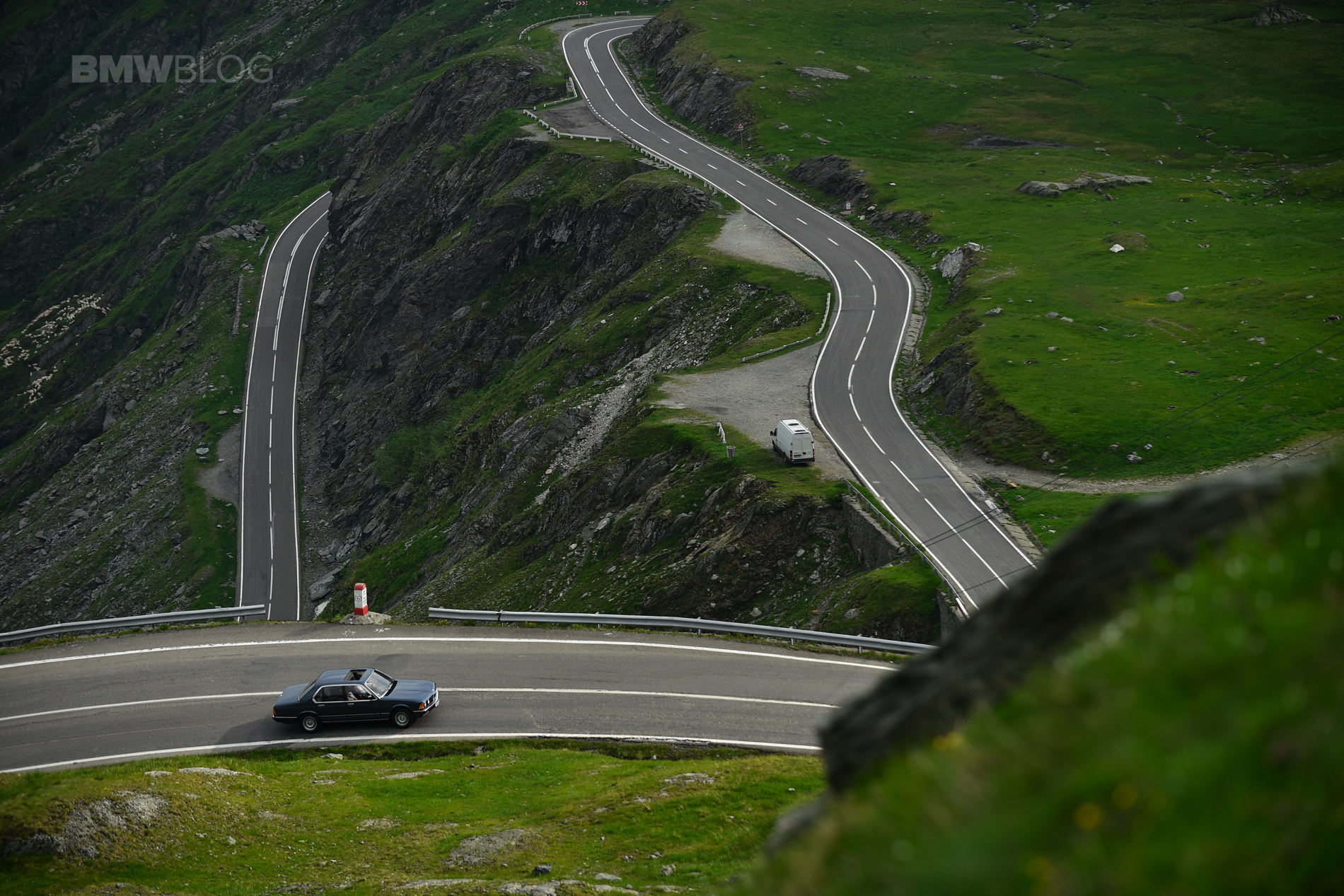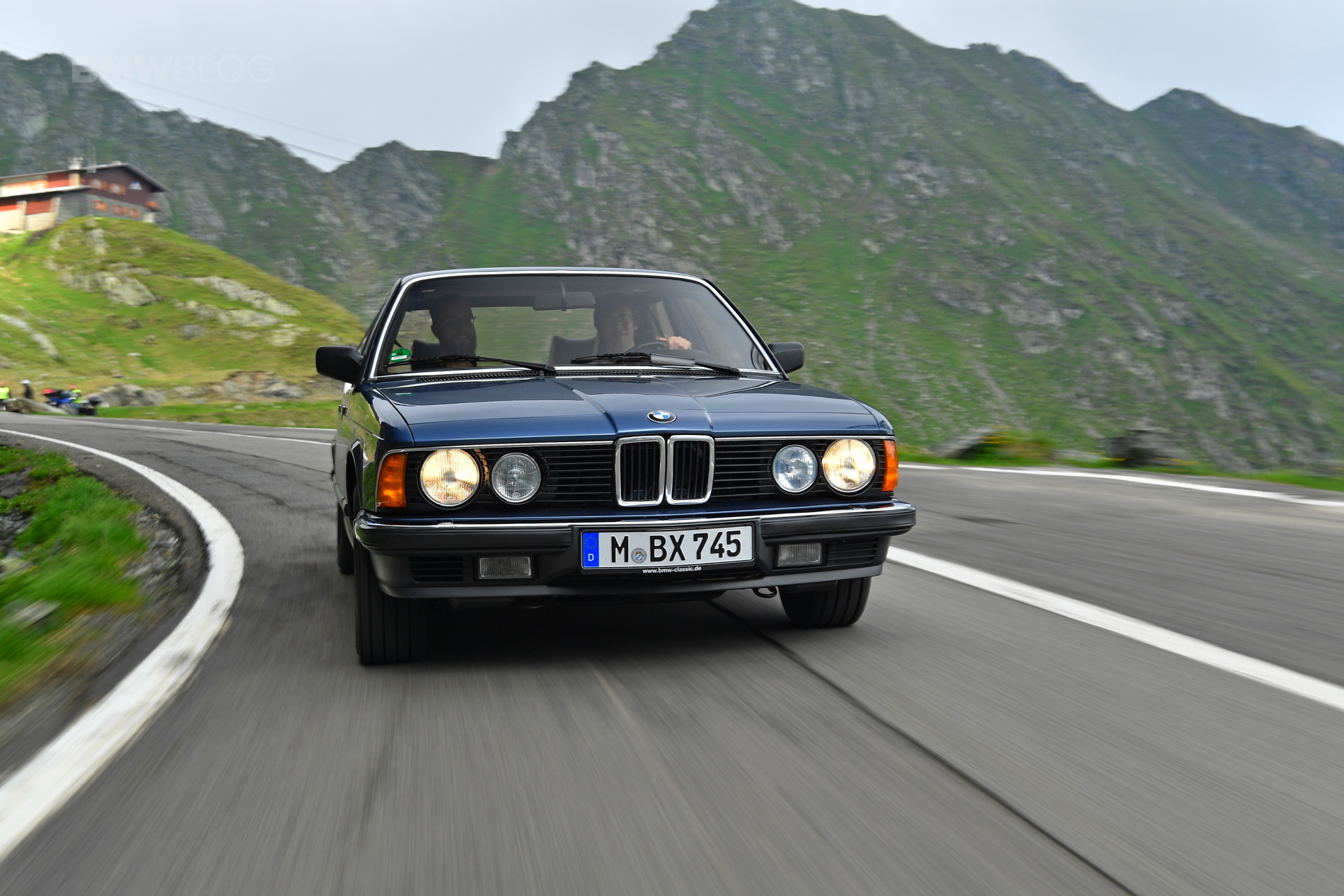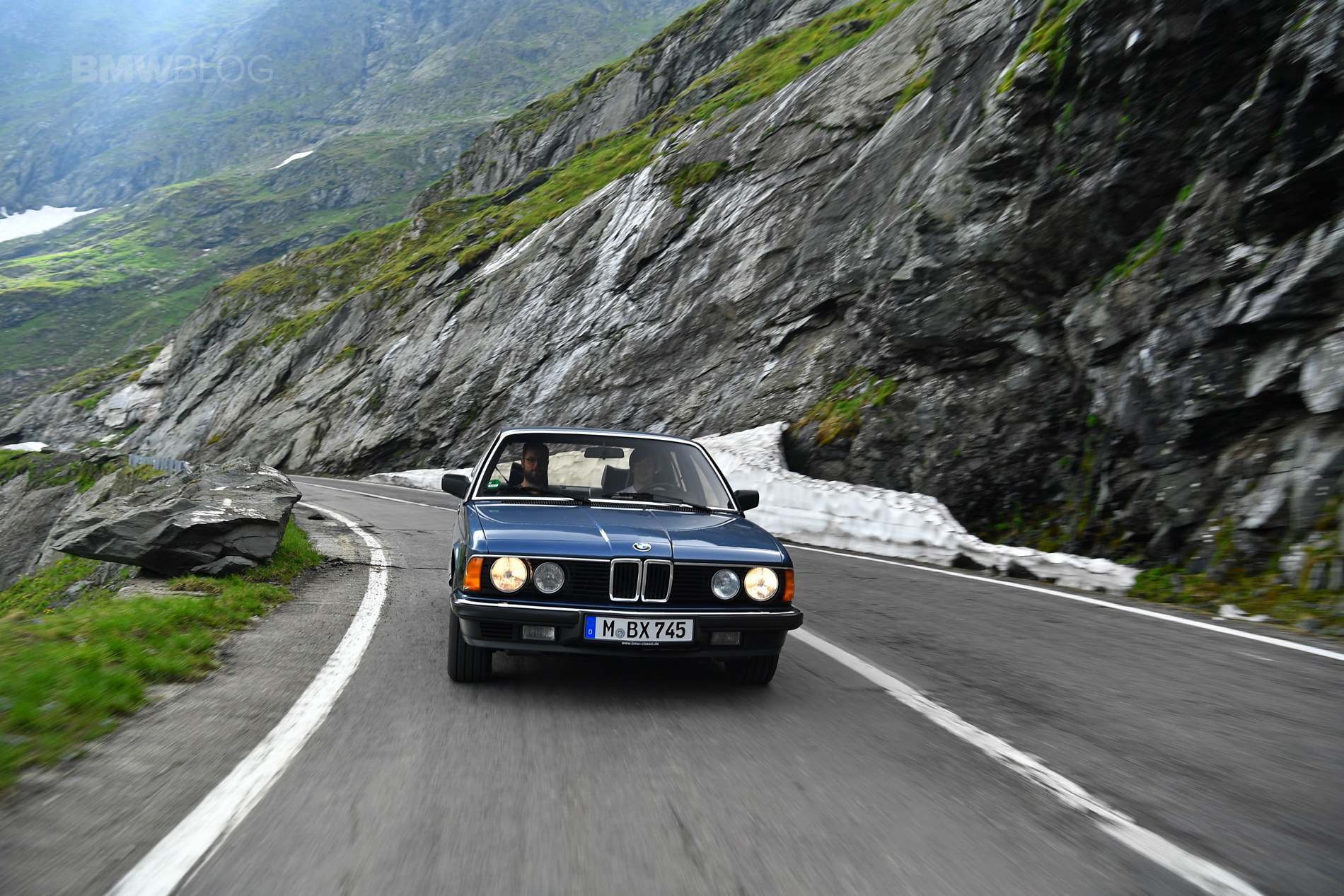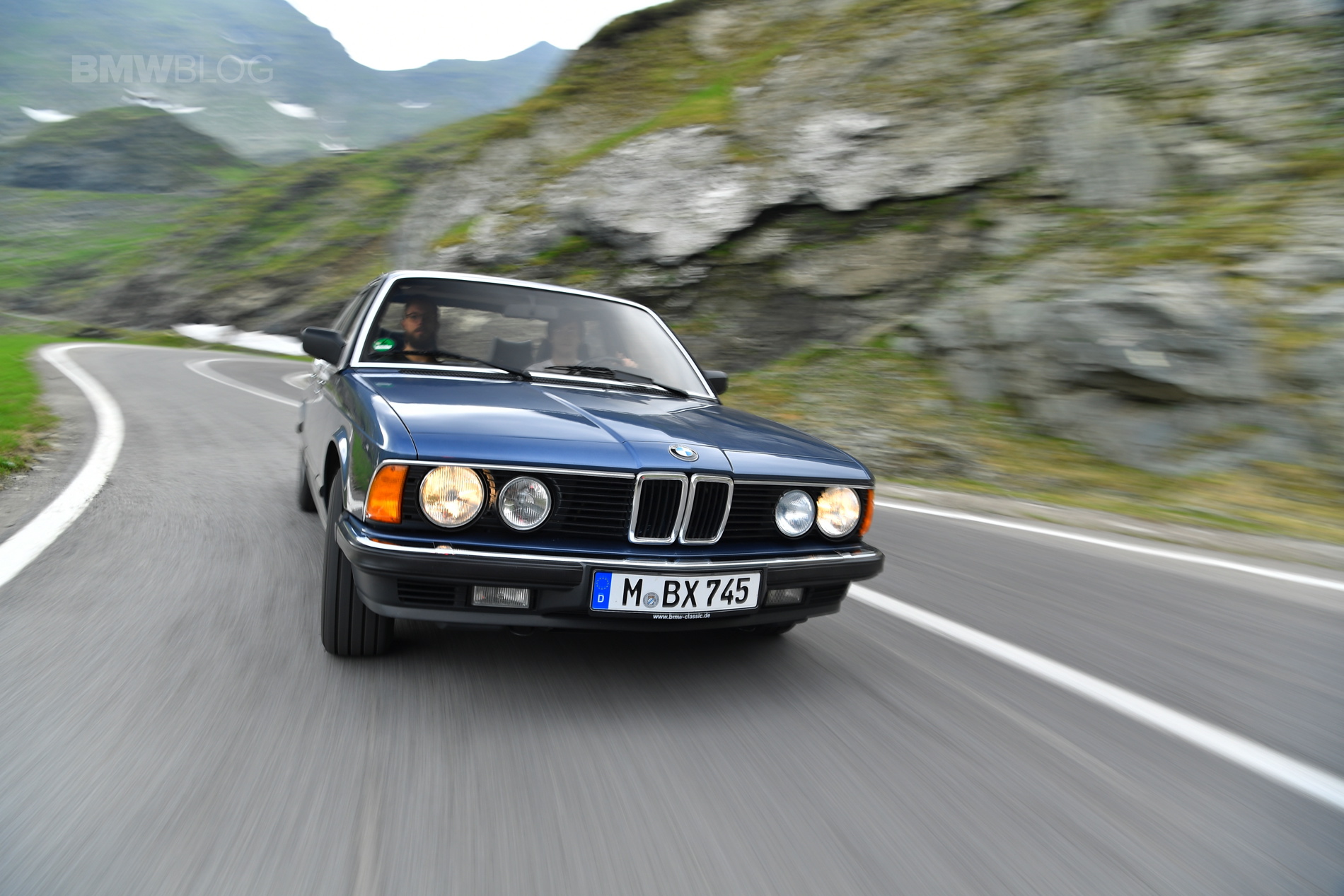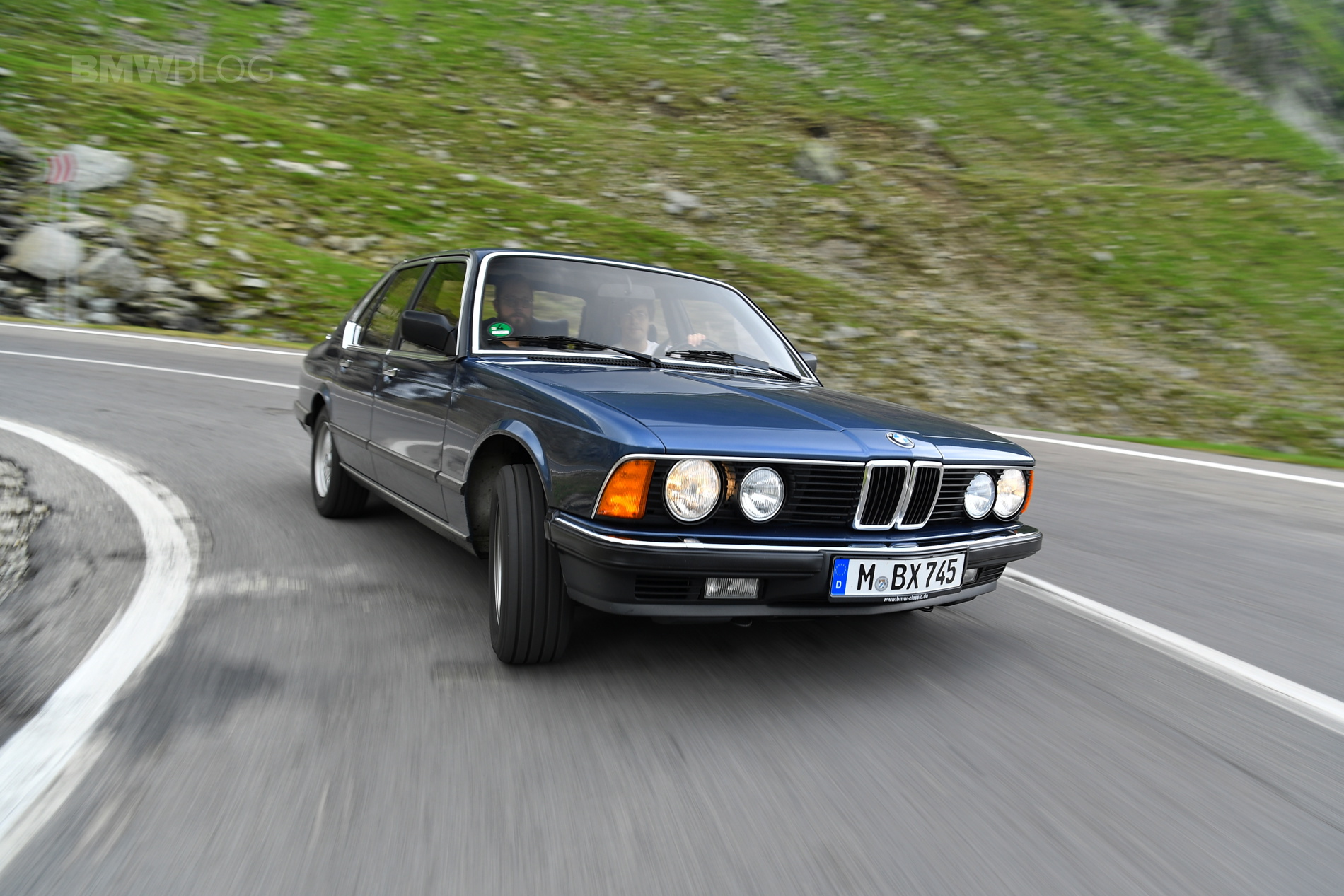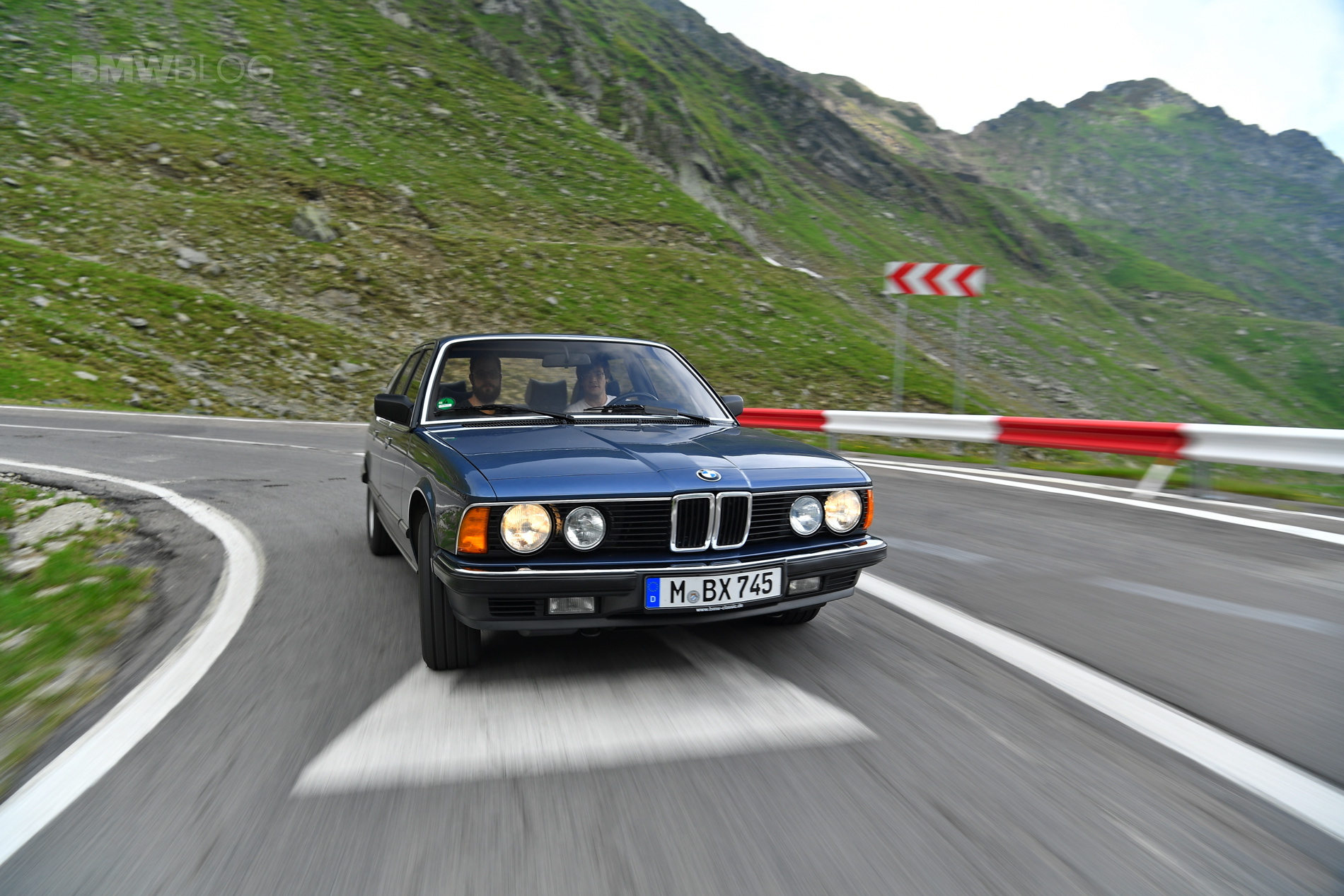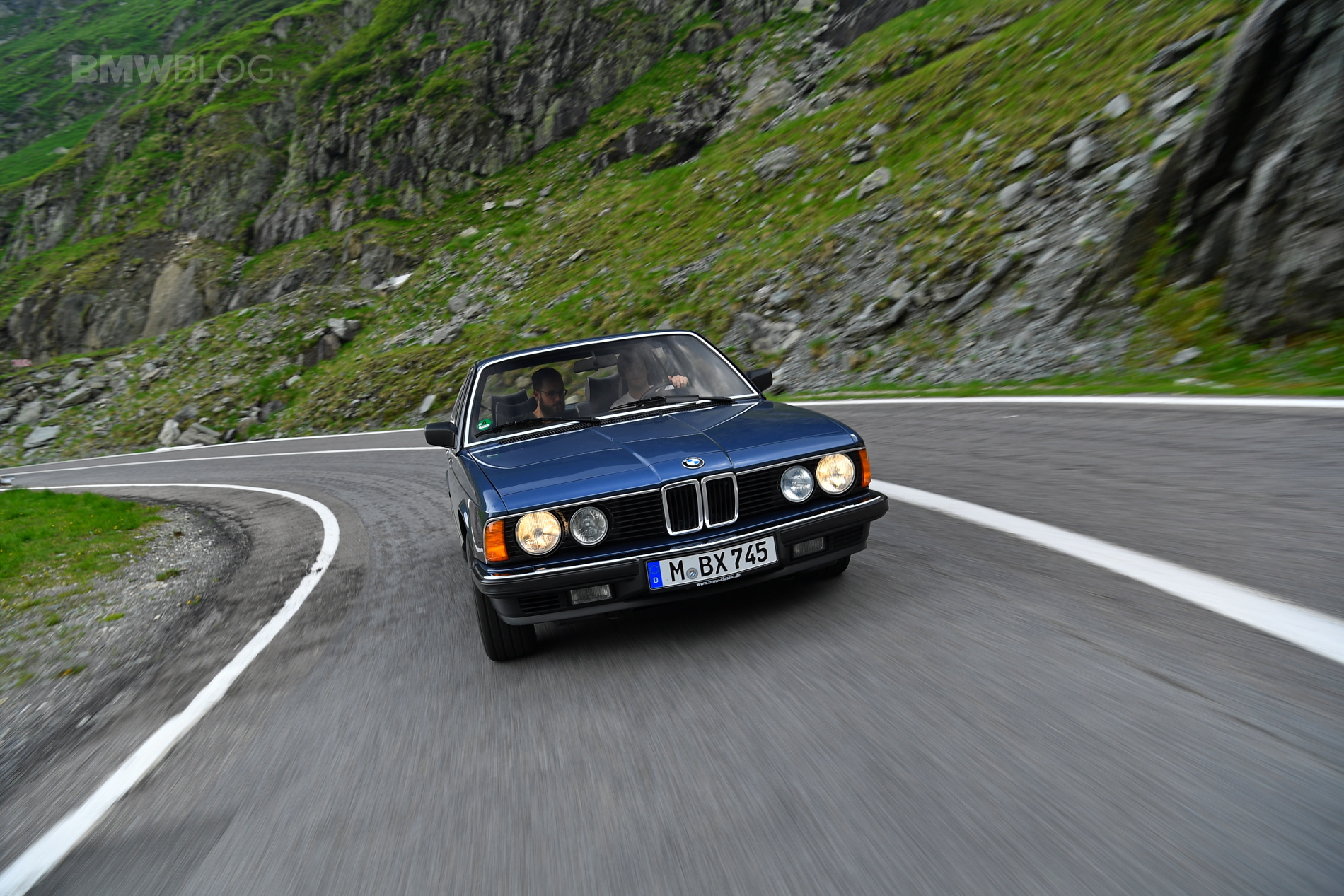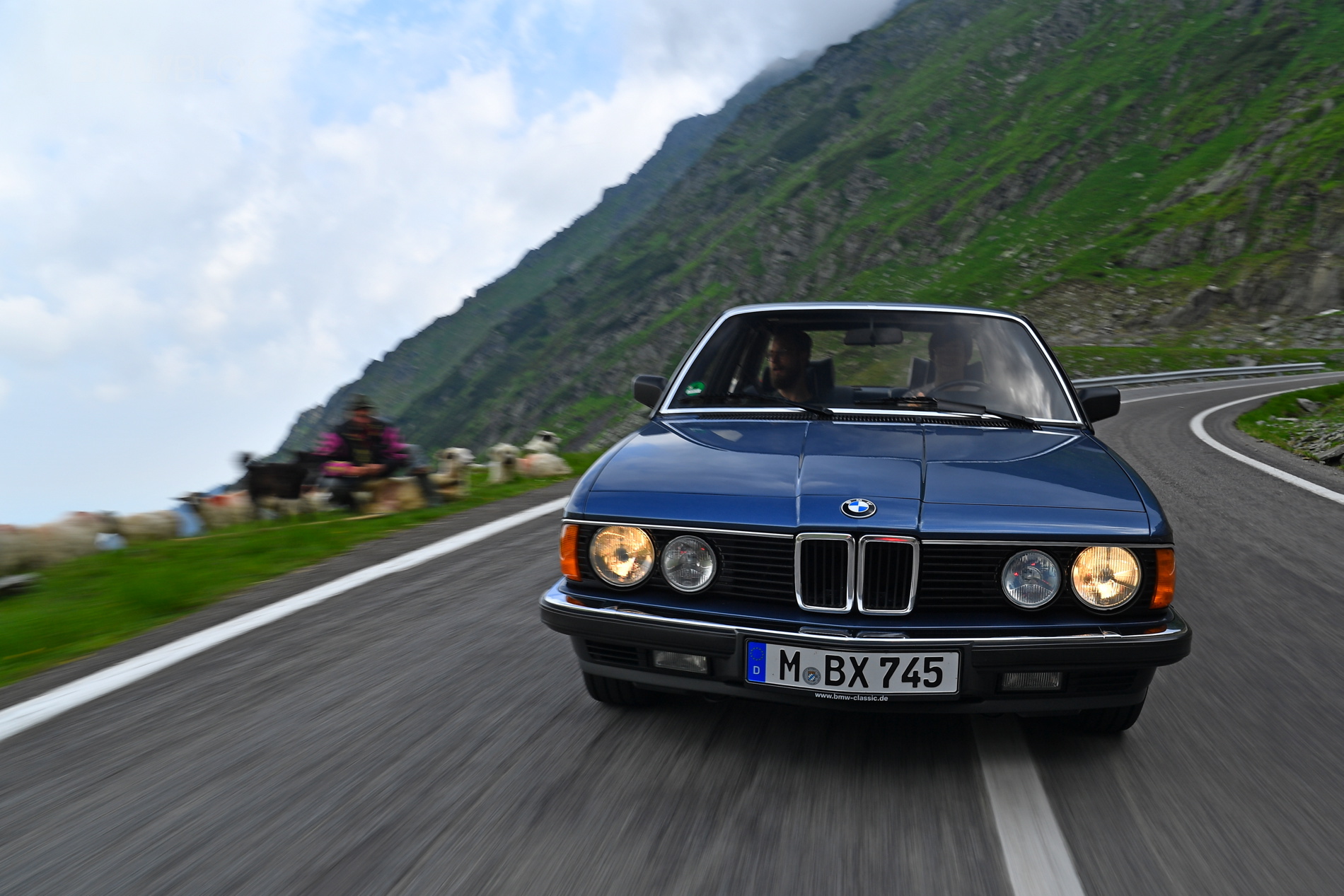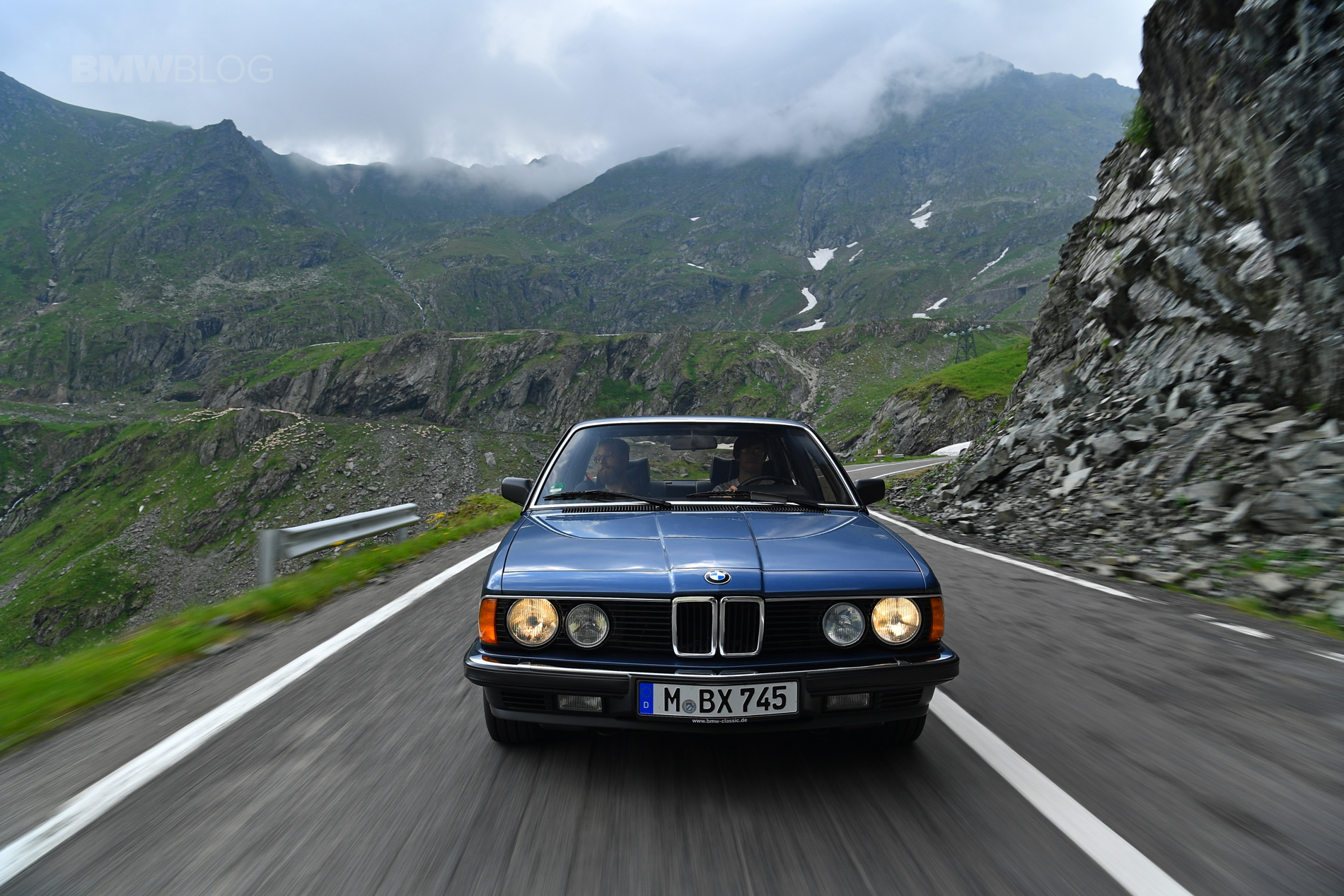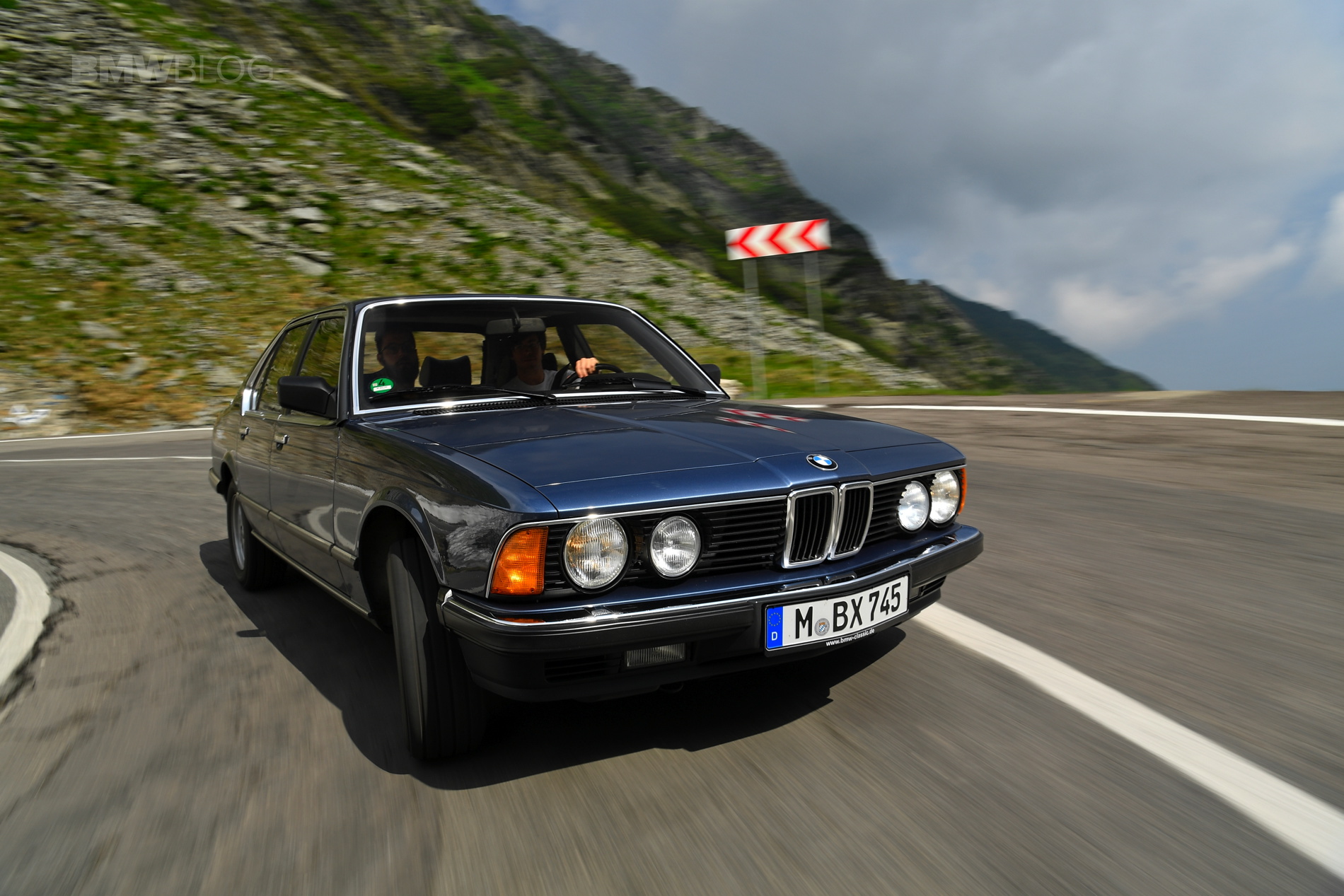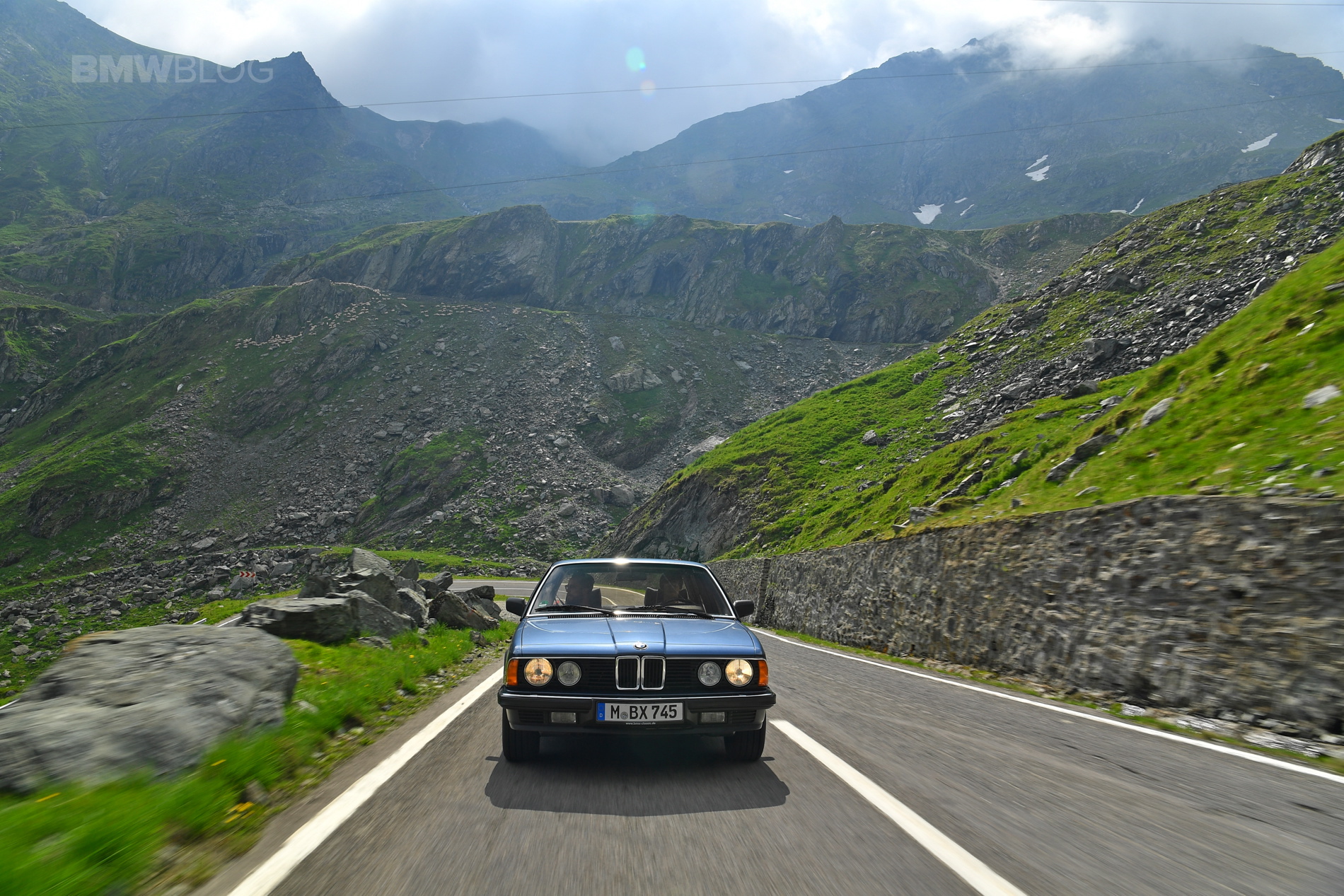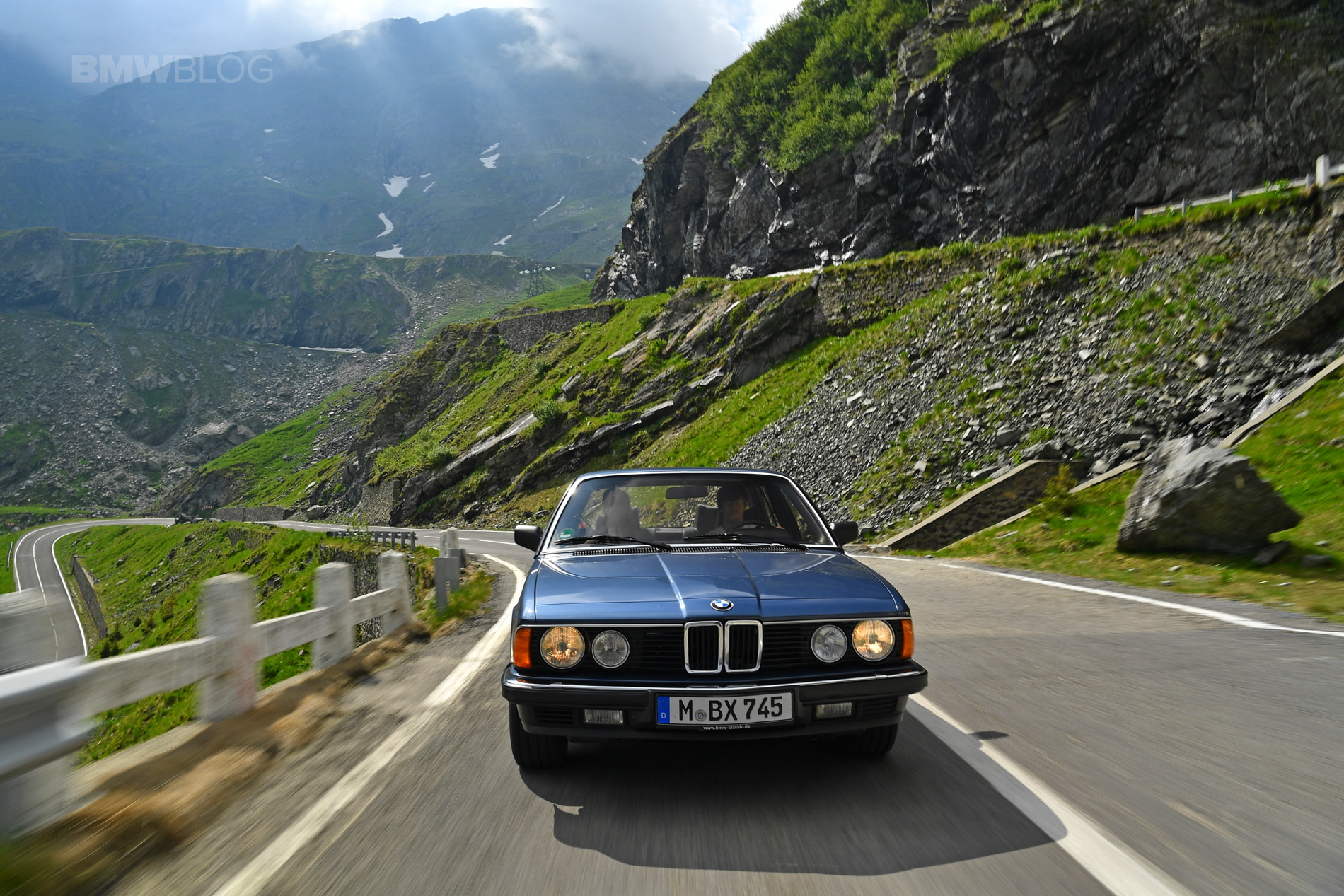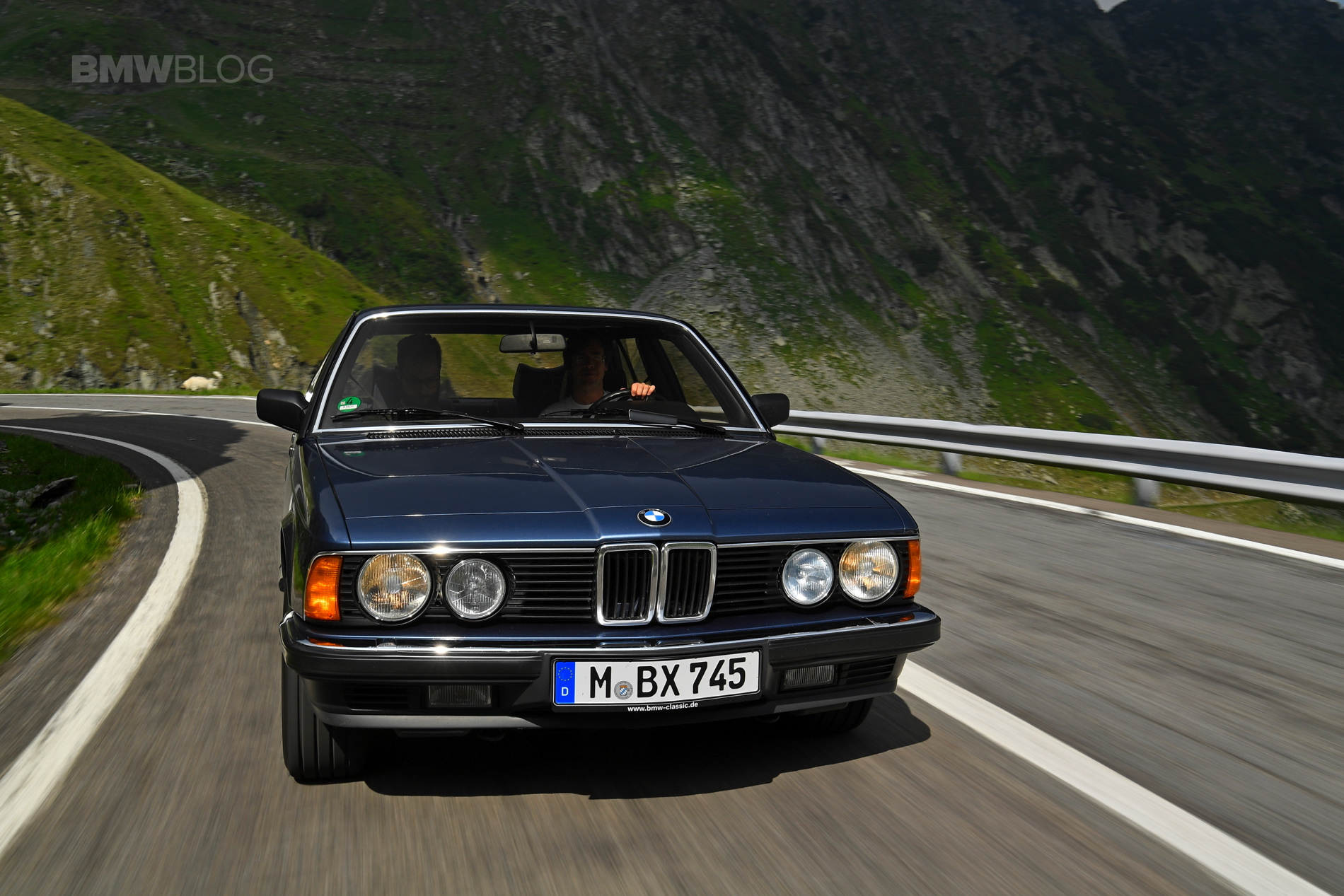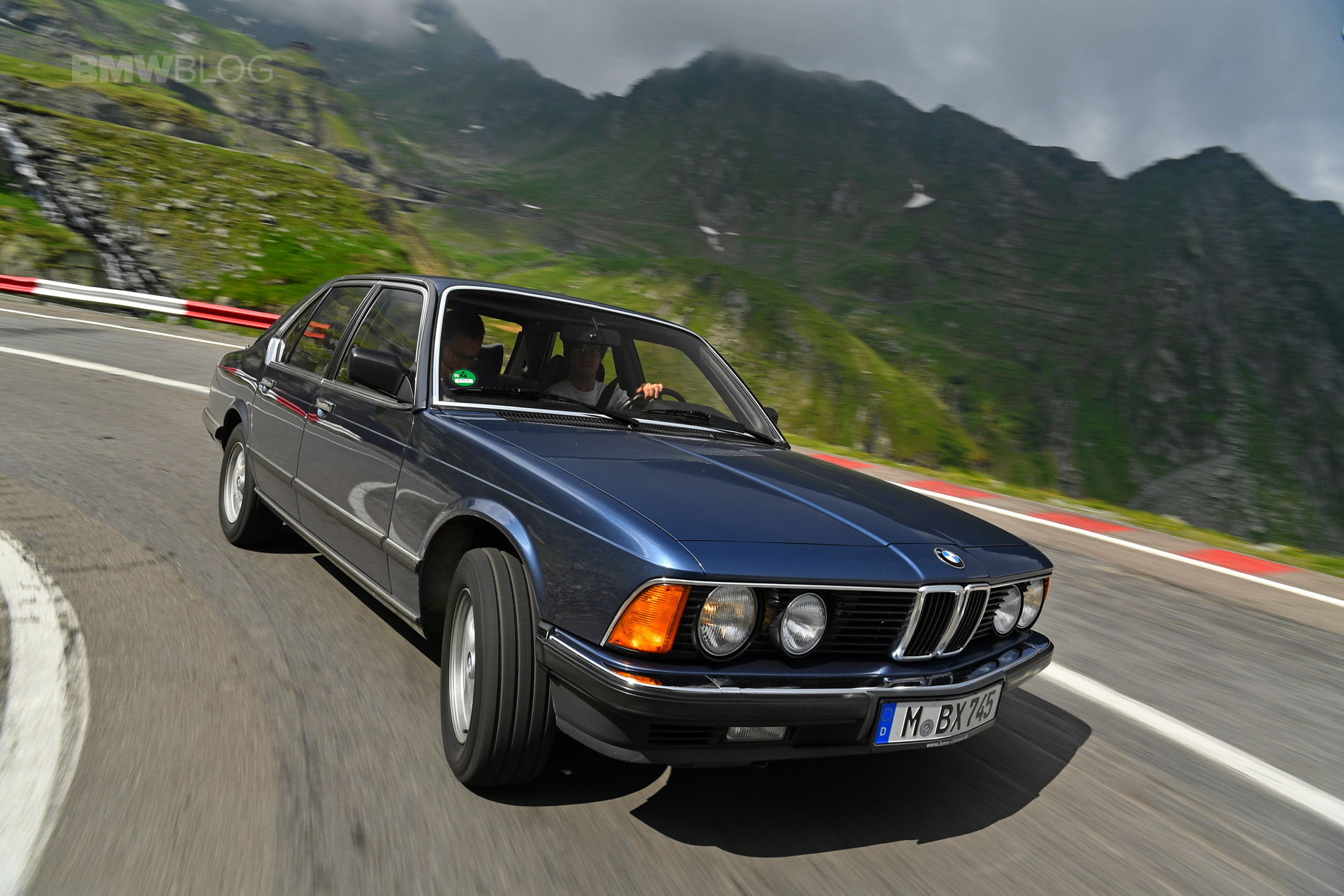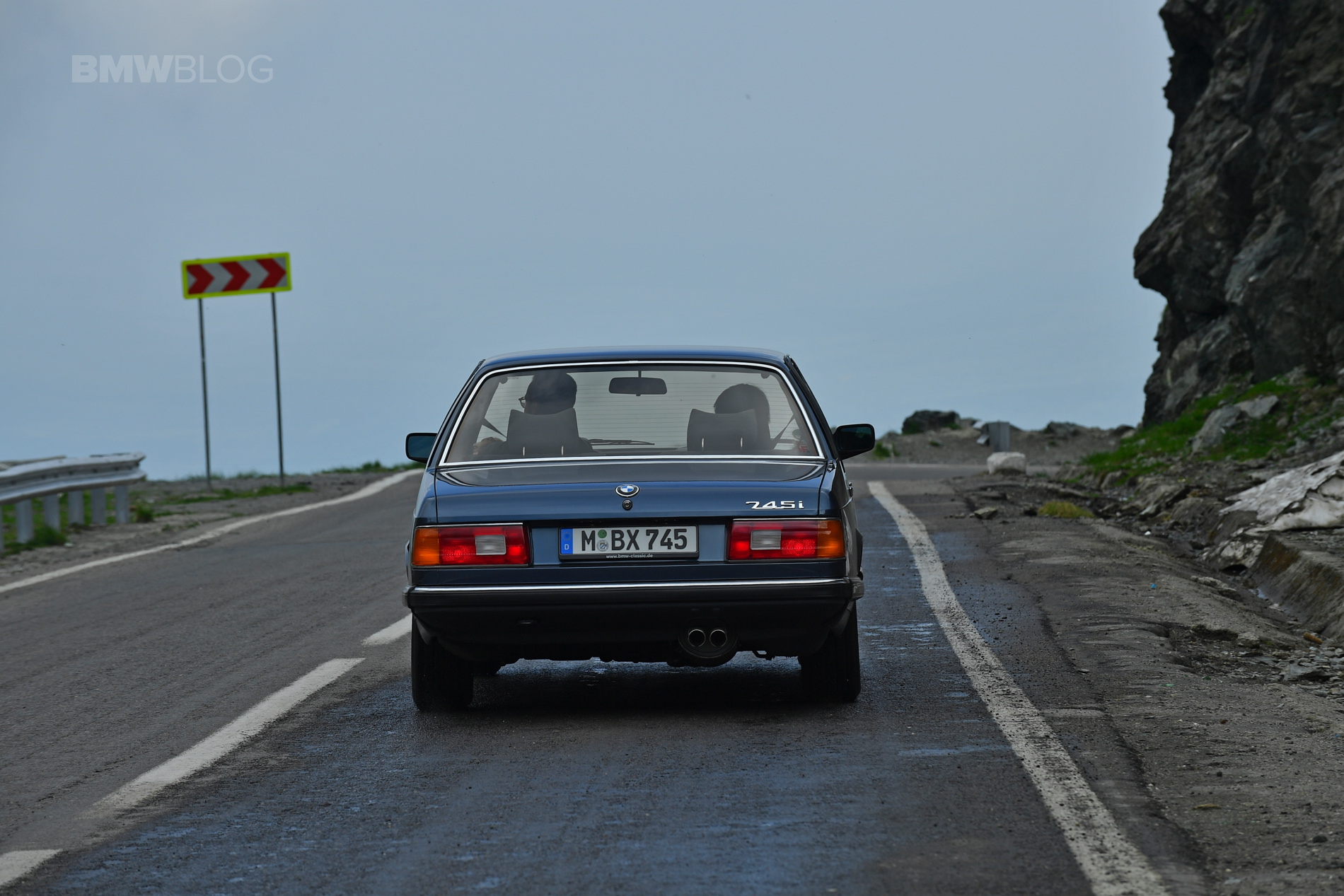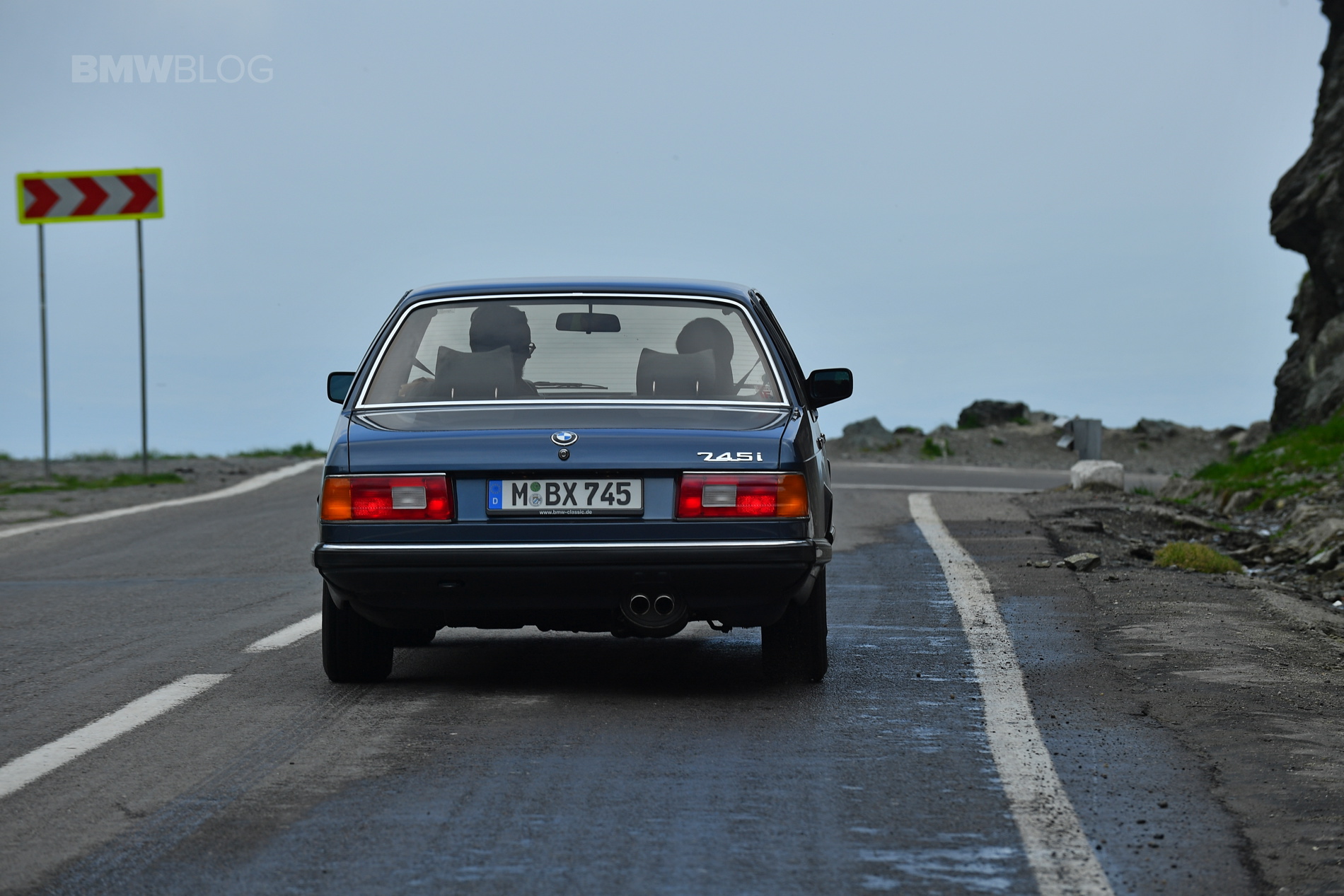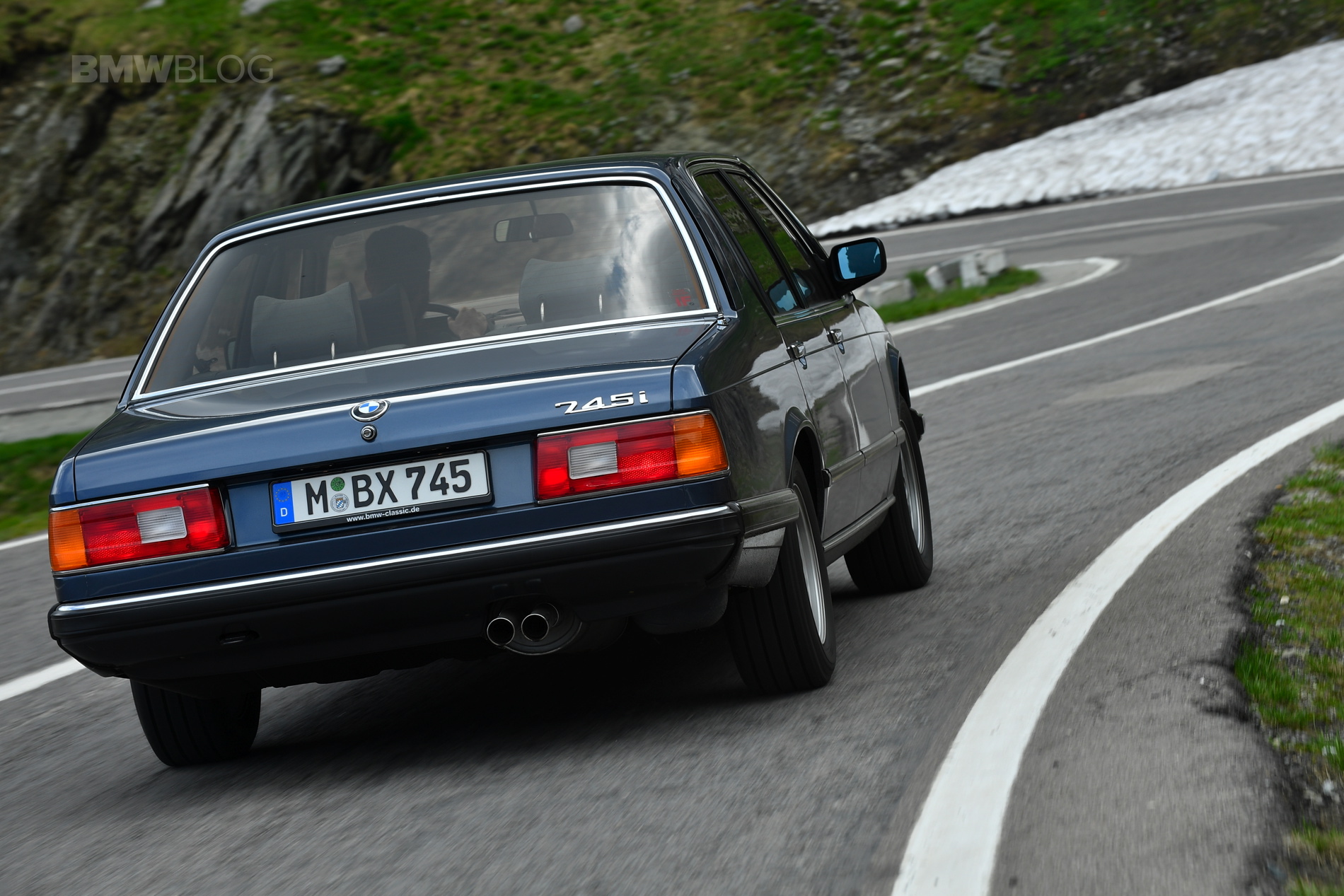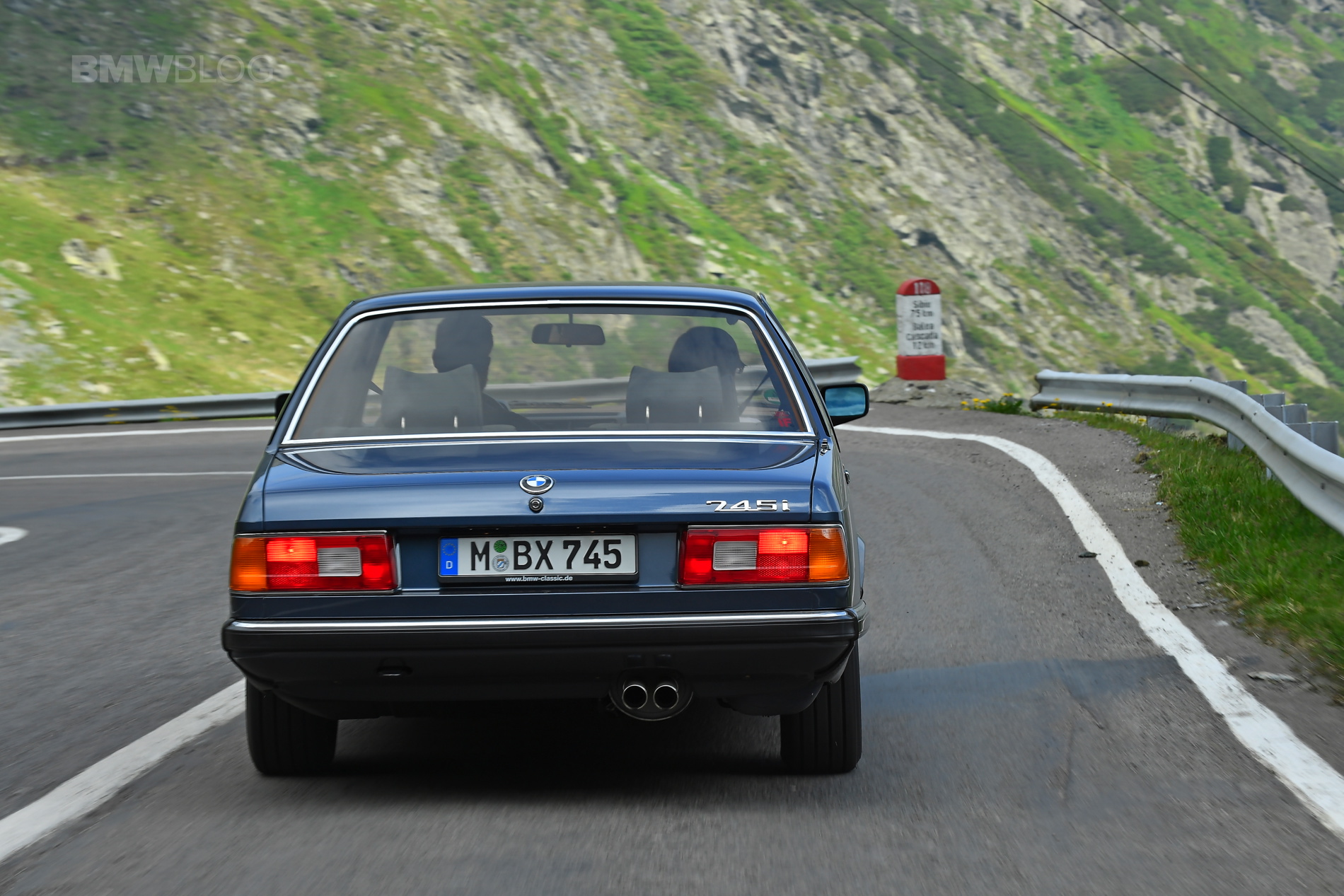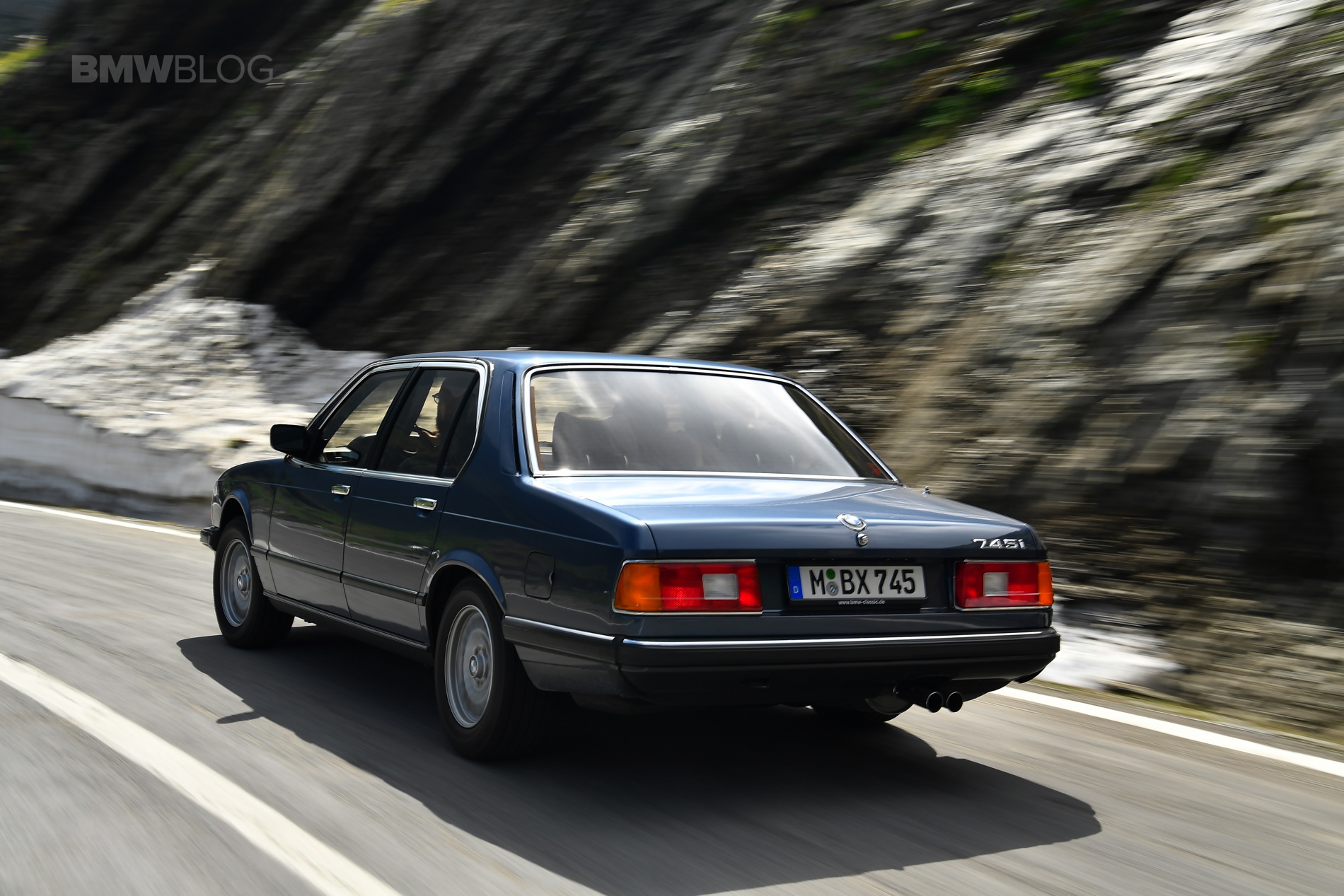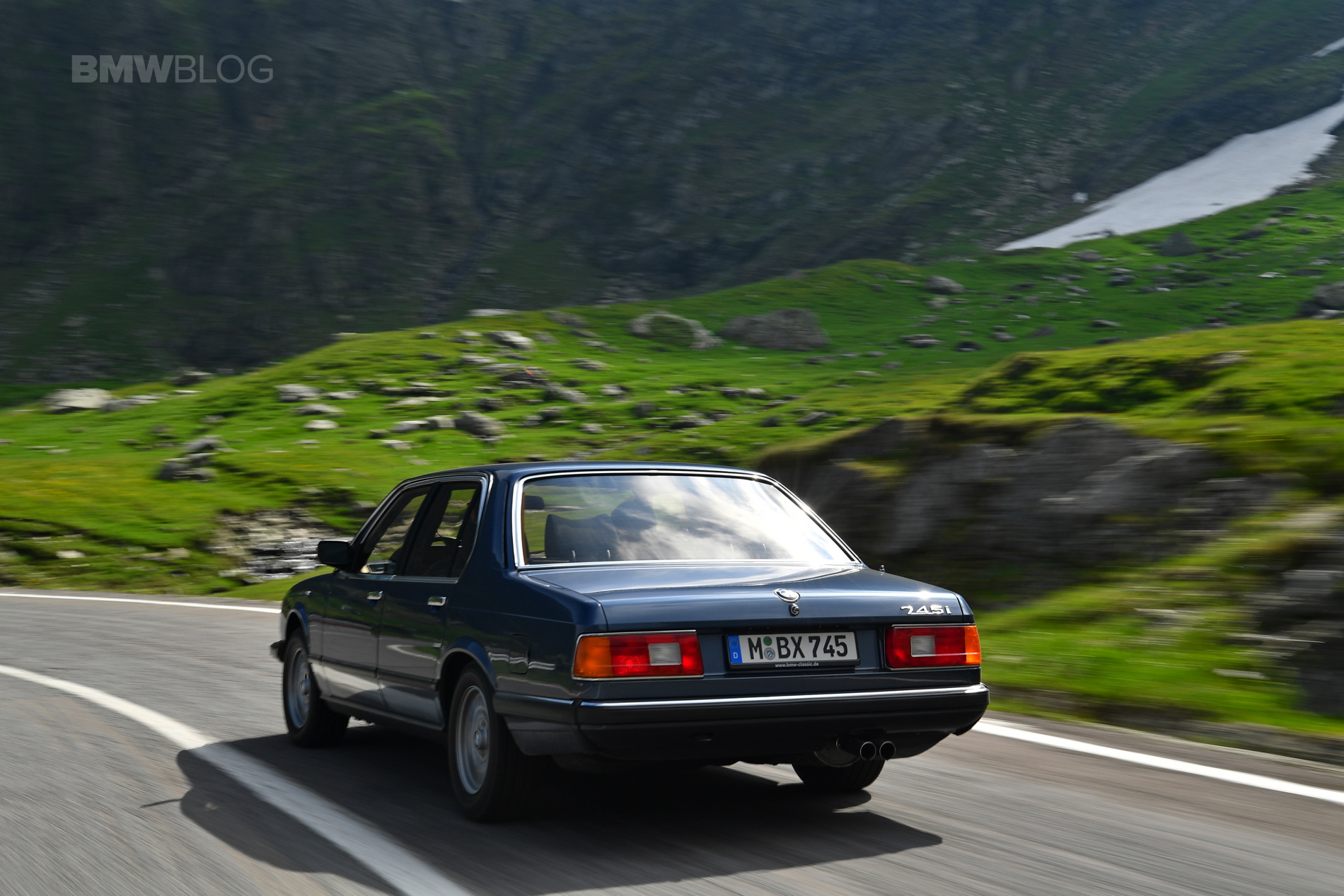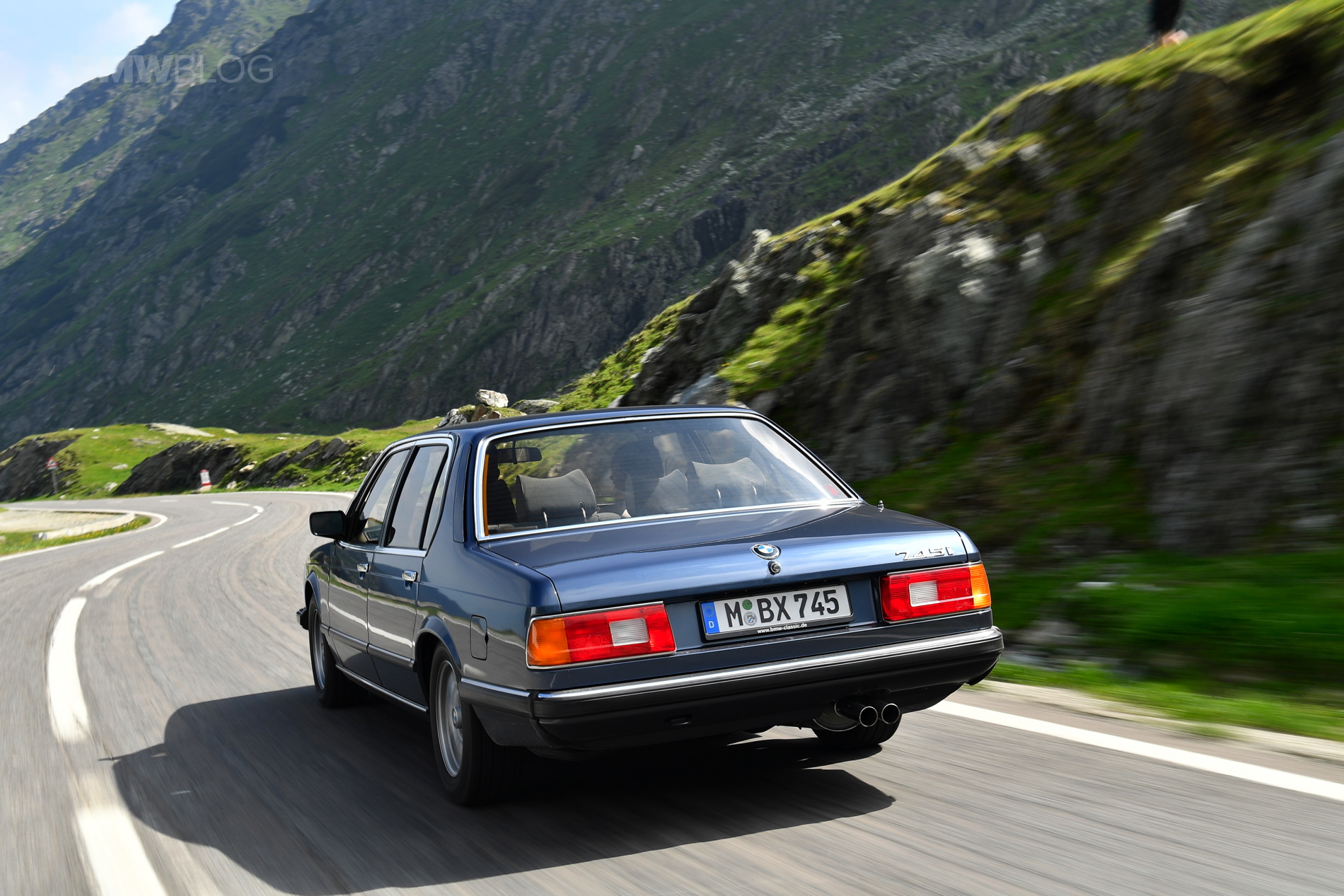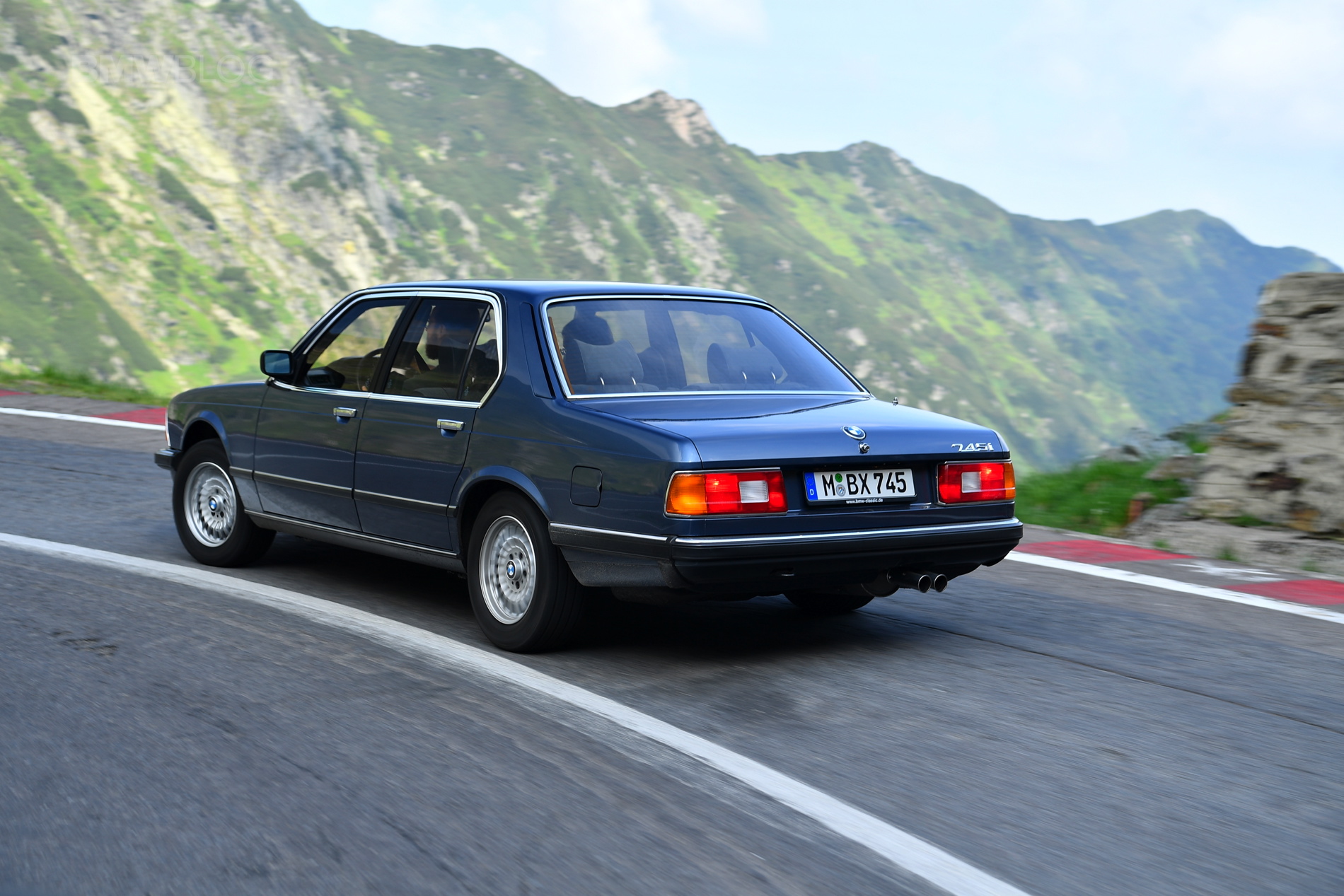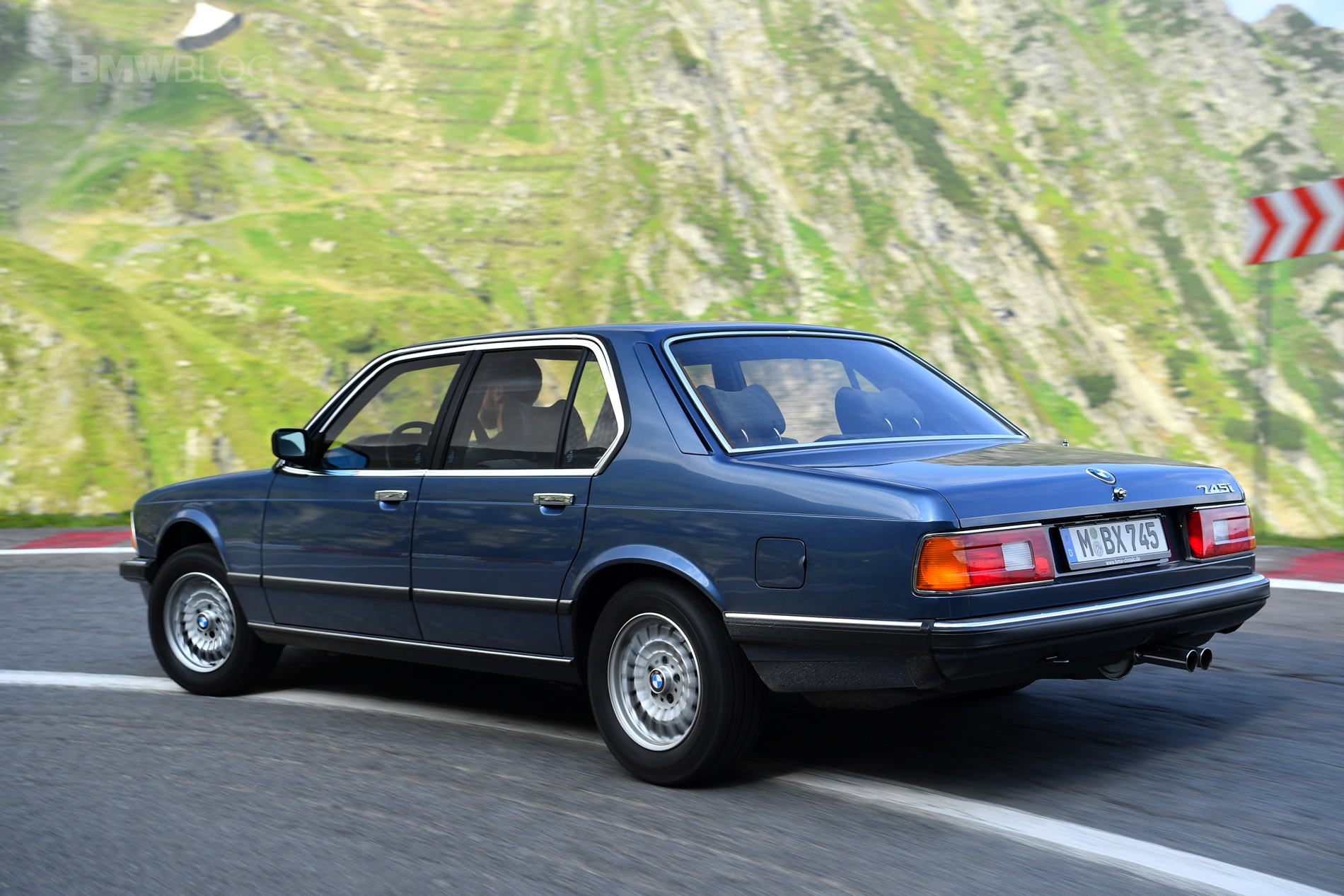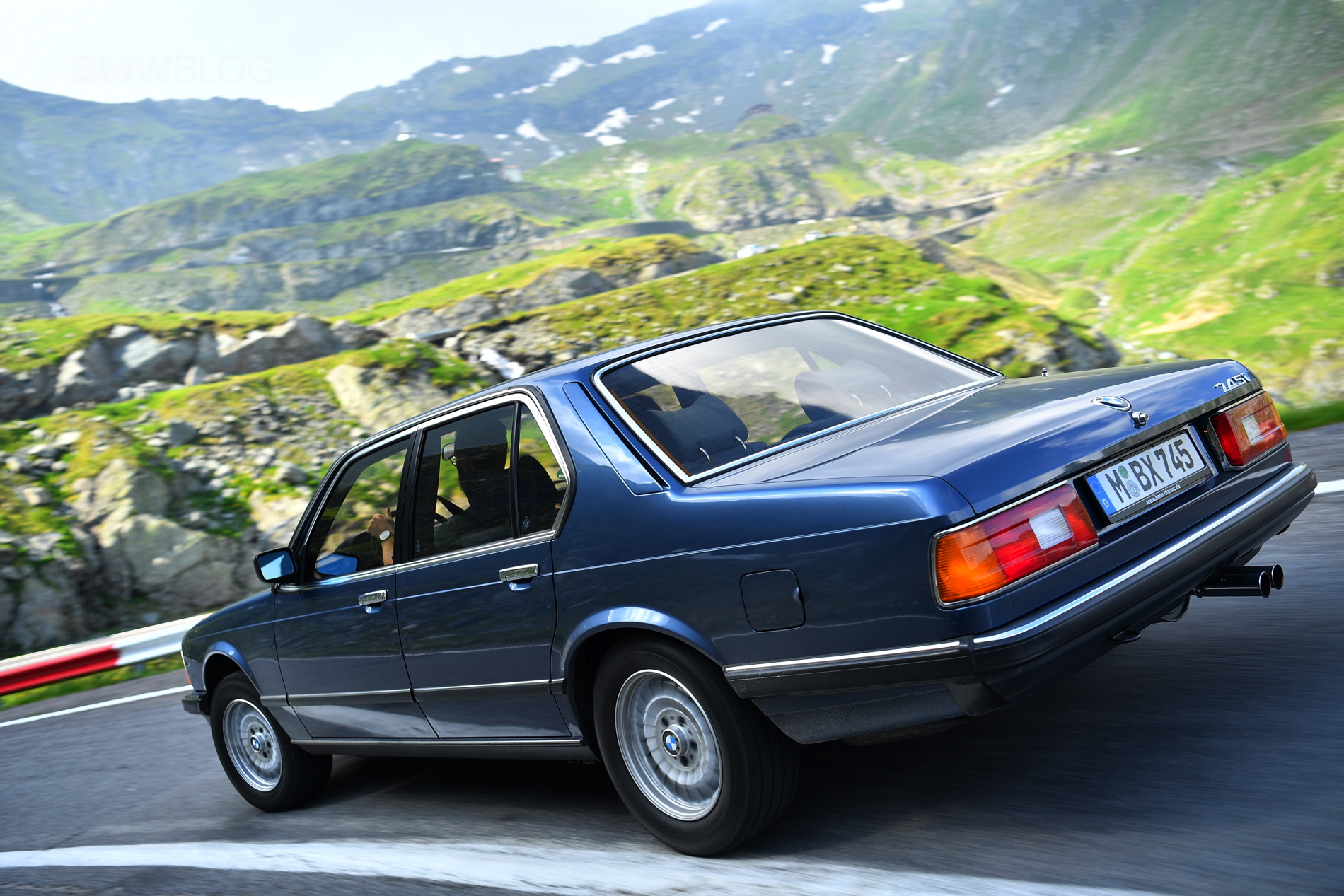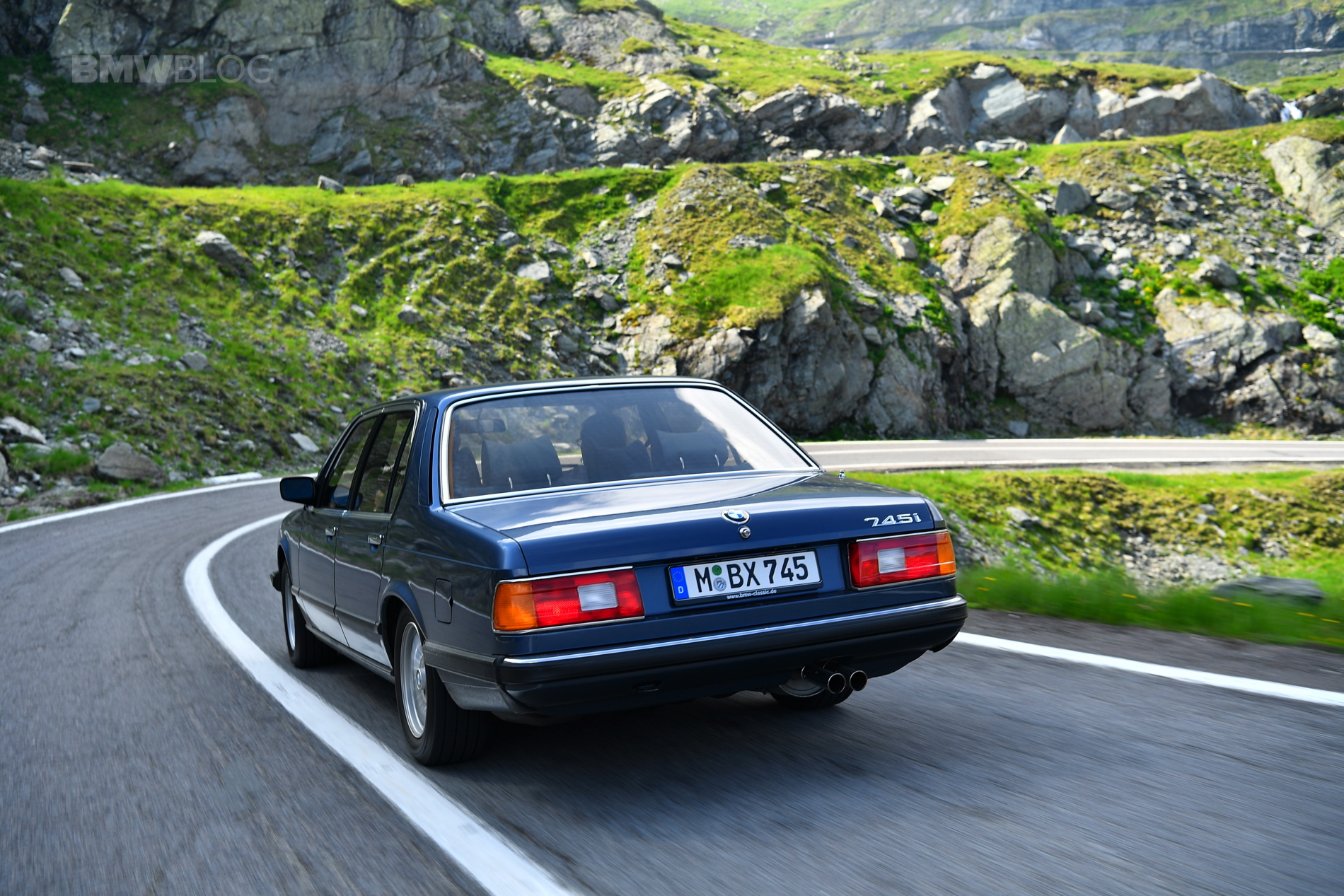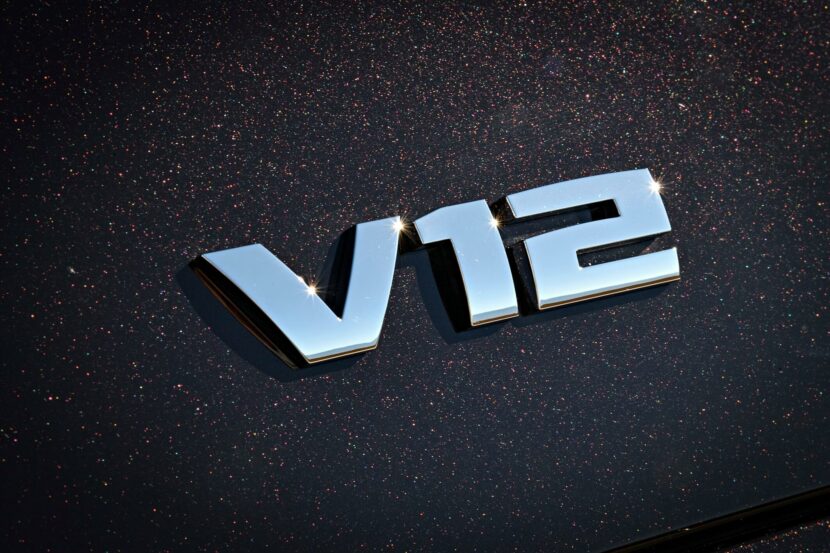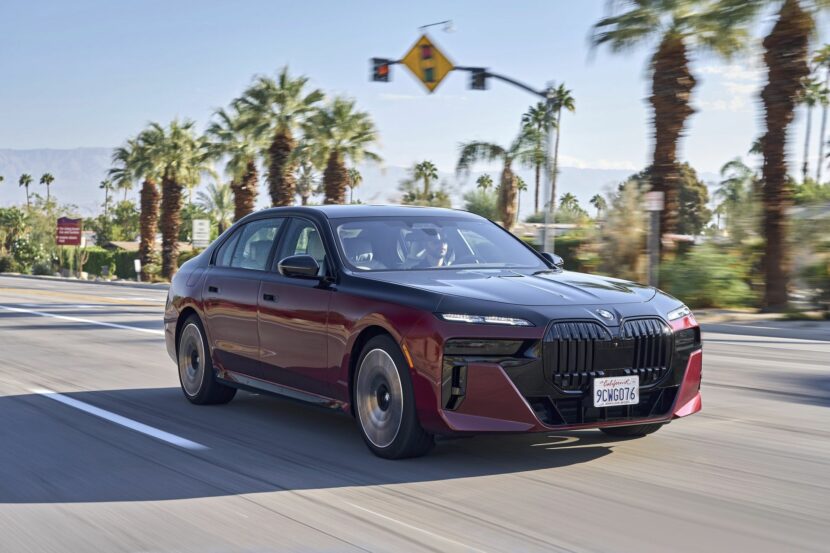Transfagarasan is a mega-road, built by communists who feared the invasion of other Communists. It’s also in the middle of Transylvania, the feared land of Dracula. Furthermore, it’s one of the best driving roads in the world, and if our word is not good enough, then Jeremy Clarkson’s might be. Last month, BMW Romania hosted their annual Concourse d’Elegance where a plethora of BMW classic cars were displayed, or driven to. One of those car is the iconic E23 7 Series. You can see our quick review here. The 1983 BMW 745i E23 had the most kilometers on board (if 29,000 seem to be many), but was in mint condition.
All E23 7 Series models (with the exception of the 745i) were built with the 12-valve M30 six-cylinder engine as used in the older E3 and E9 cars.
The E23 was the first BMW fitted with service interval indicators, a ‘check control’ that alerted the driver to various system faults, and complex climate control systems. On-board computers and anti-lock braking system (ABS) were optional on early models but later became standard features. Also, later models (1985–1986) offered an optional driver’s air bag.
Under the hood of our E23 745i was a powerful engine for that time – a six 3.2-liter (M30) 250-hp turbocharged coupled to a three-speed automatic box. By far the loudest engine here, at any revs, with a sound that might be mistaken to a V8, not an inline six. Although it’s not a fast-paced machine for today’s standards, it’s the car that led to the birth of the M5.
In the US, 1984 saw the arrival of the optional 4-speed automatic transmission (replacing the 3-speed unit previously offered), upgraded wood trim above the glove compartment and on the ashtray (previously plastic in all US models), electrically adjustable power seats and larger Michelin TRX radials with special TRX wheels (later standard on all 1985–1987 735i/L7 models) on the 5-speed manual models.
BMW produced 285,029 units of the E23 7 Series.
Click through the photo gallery below.


